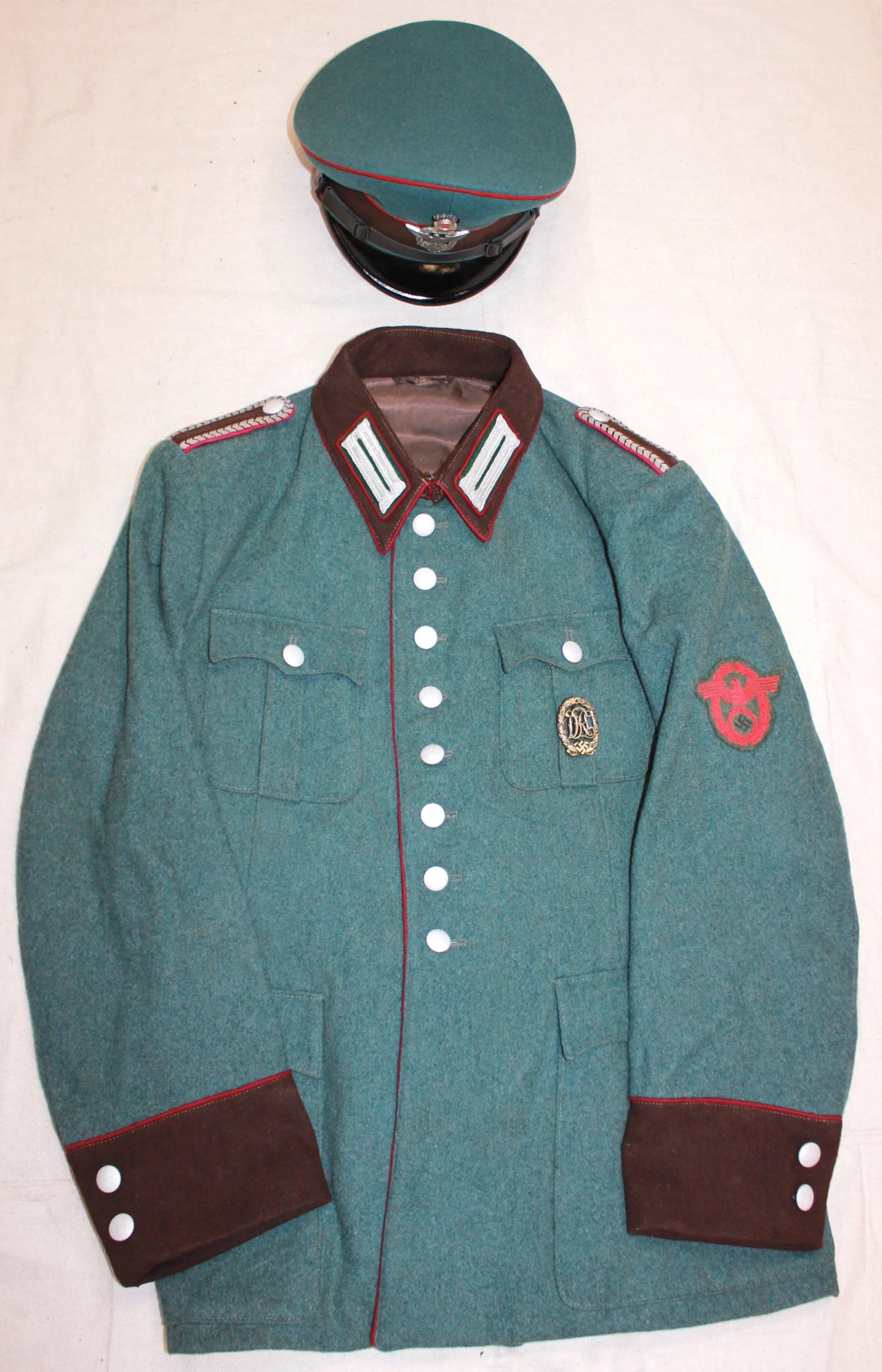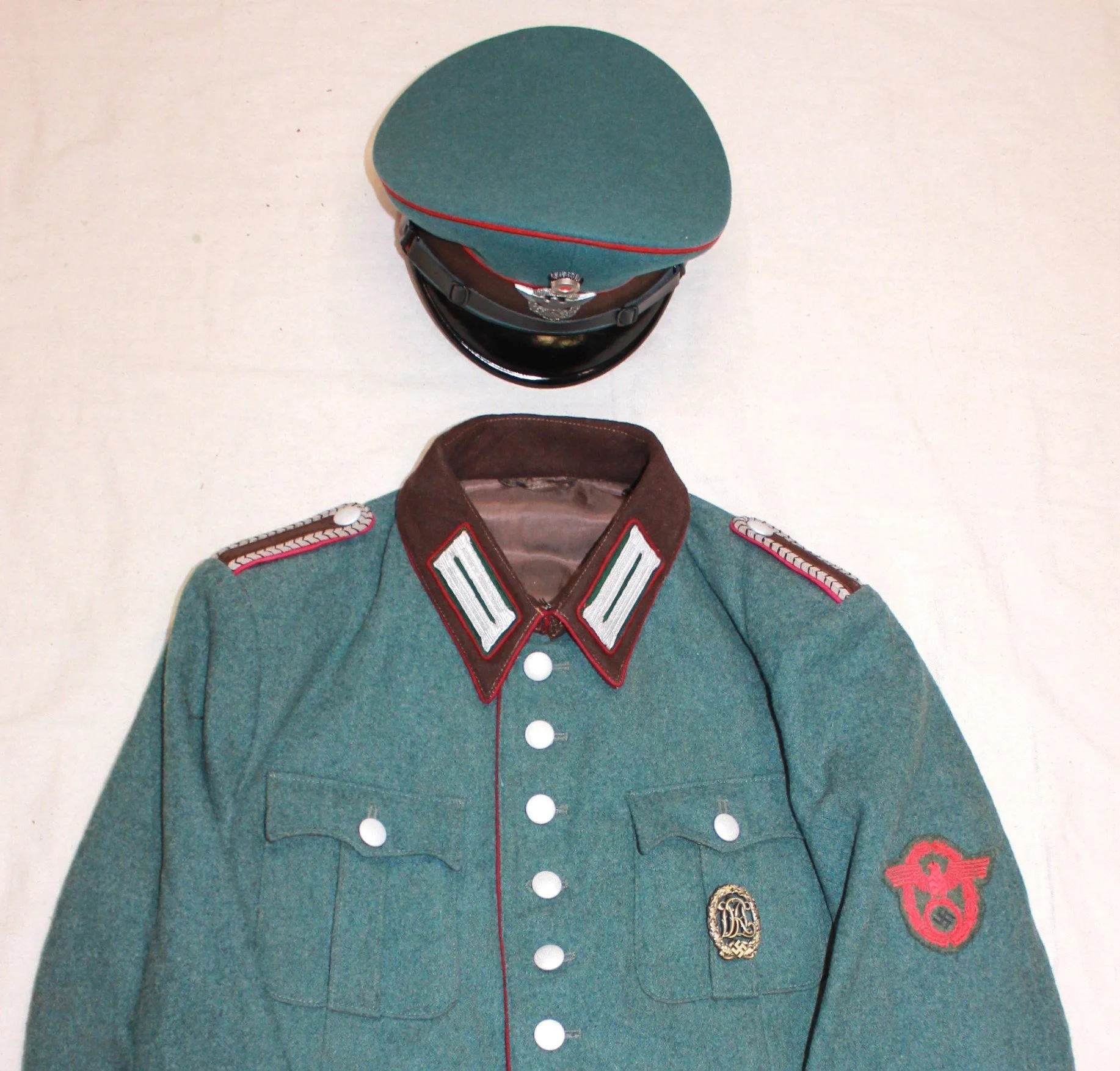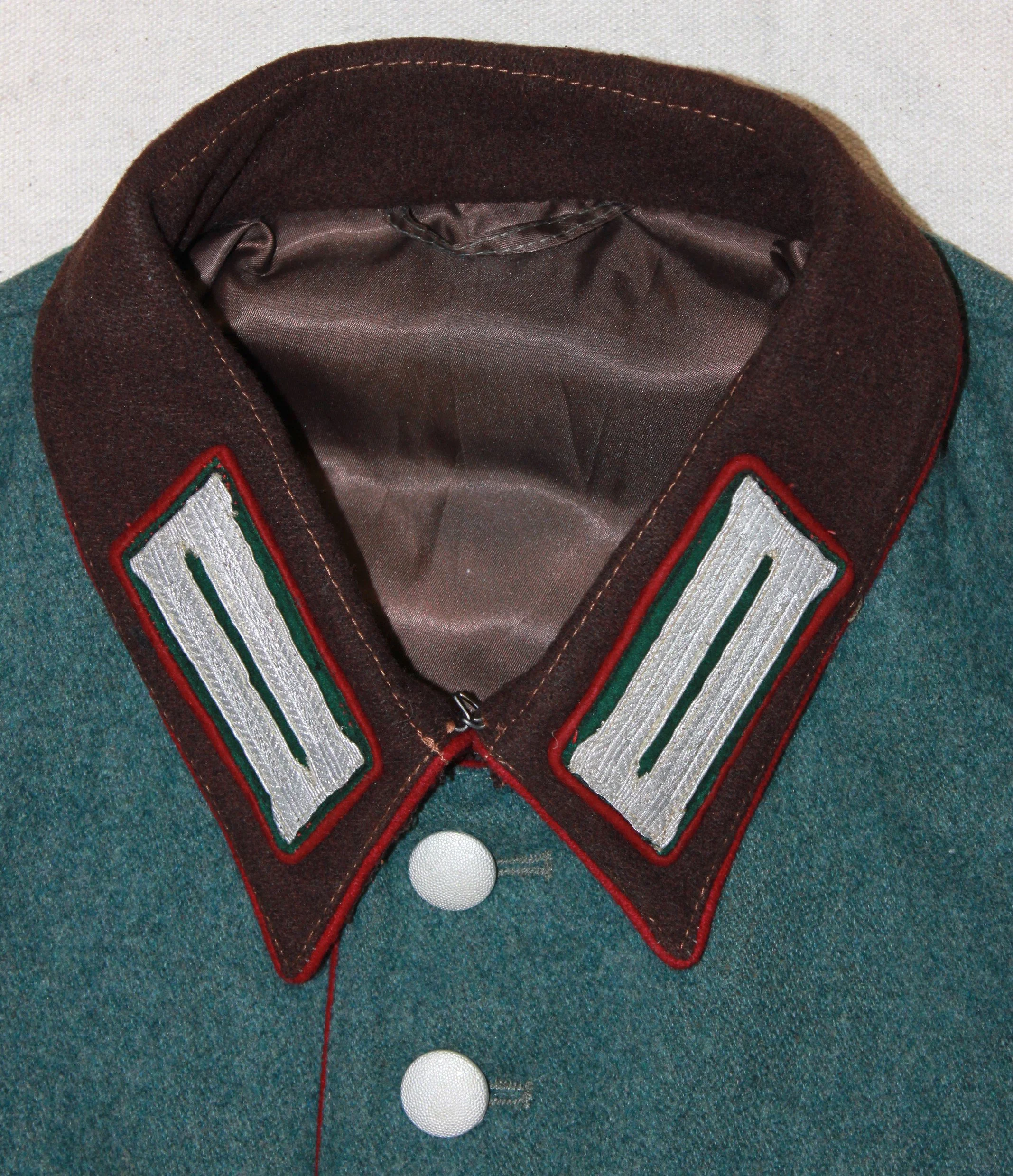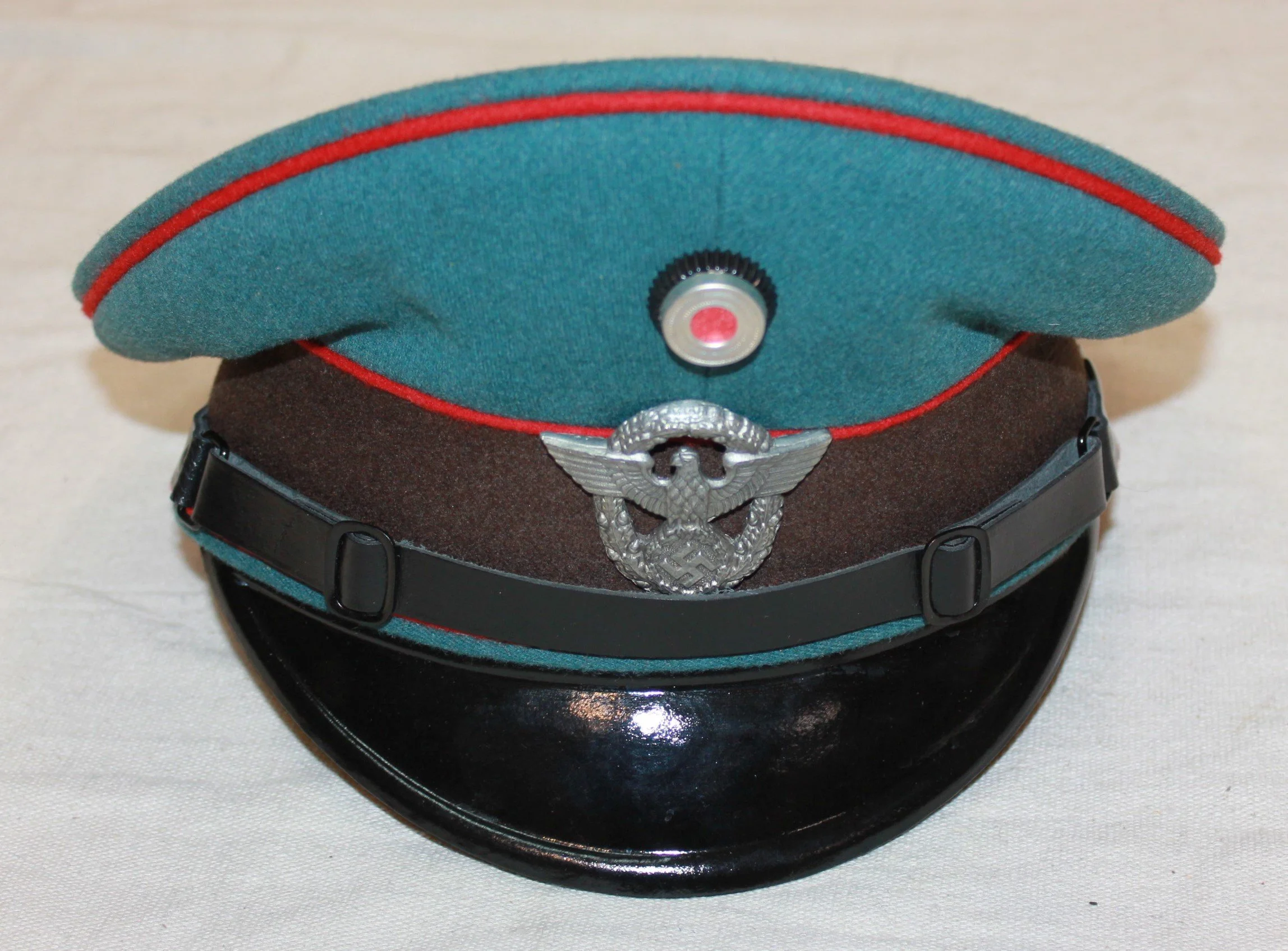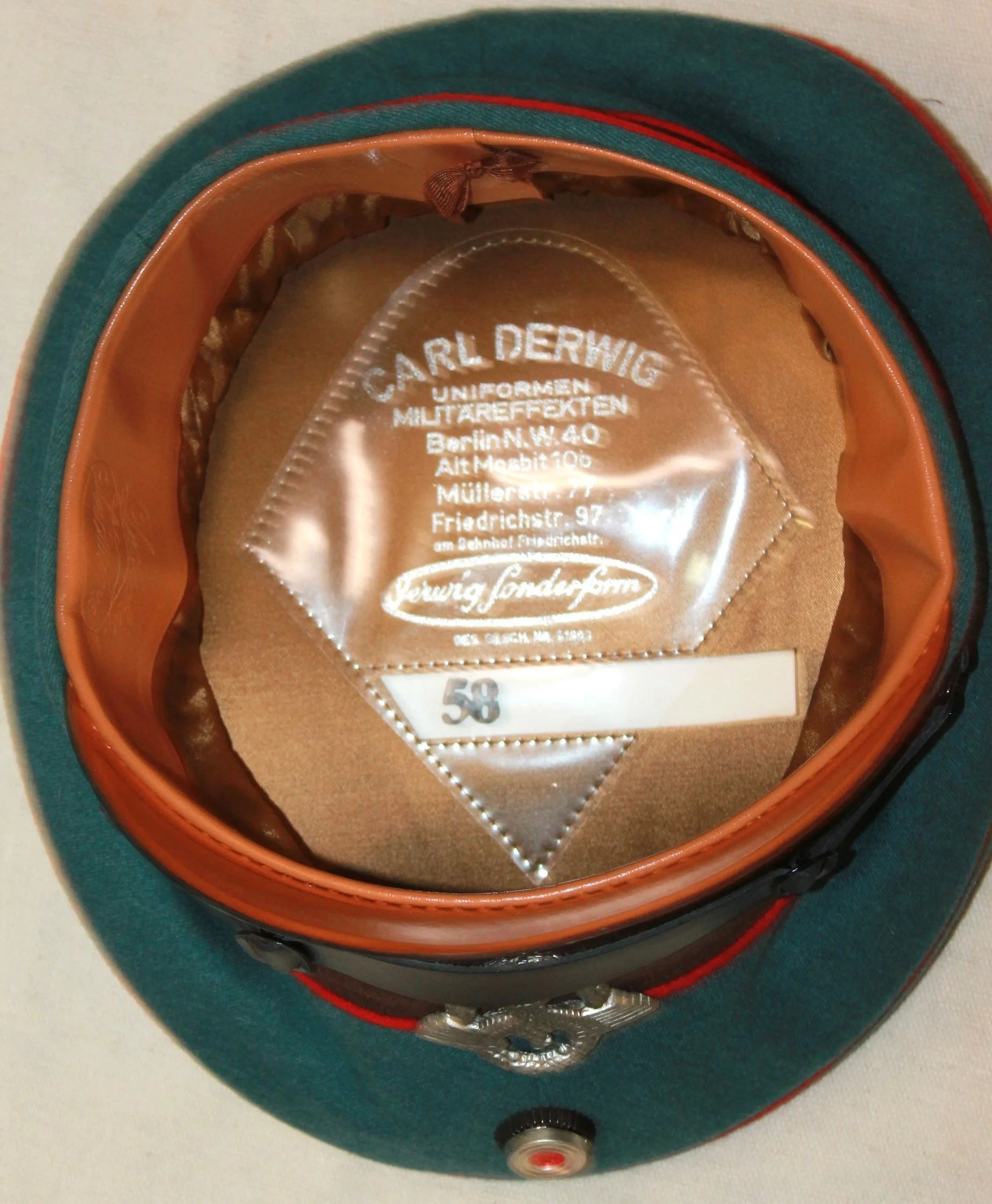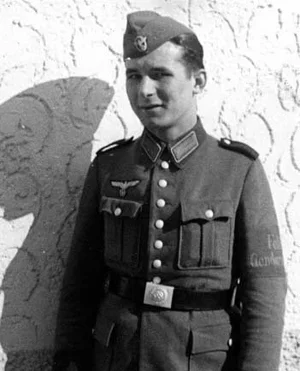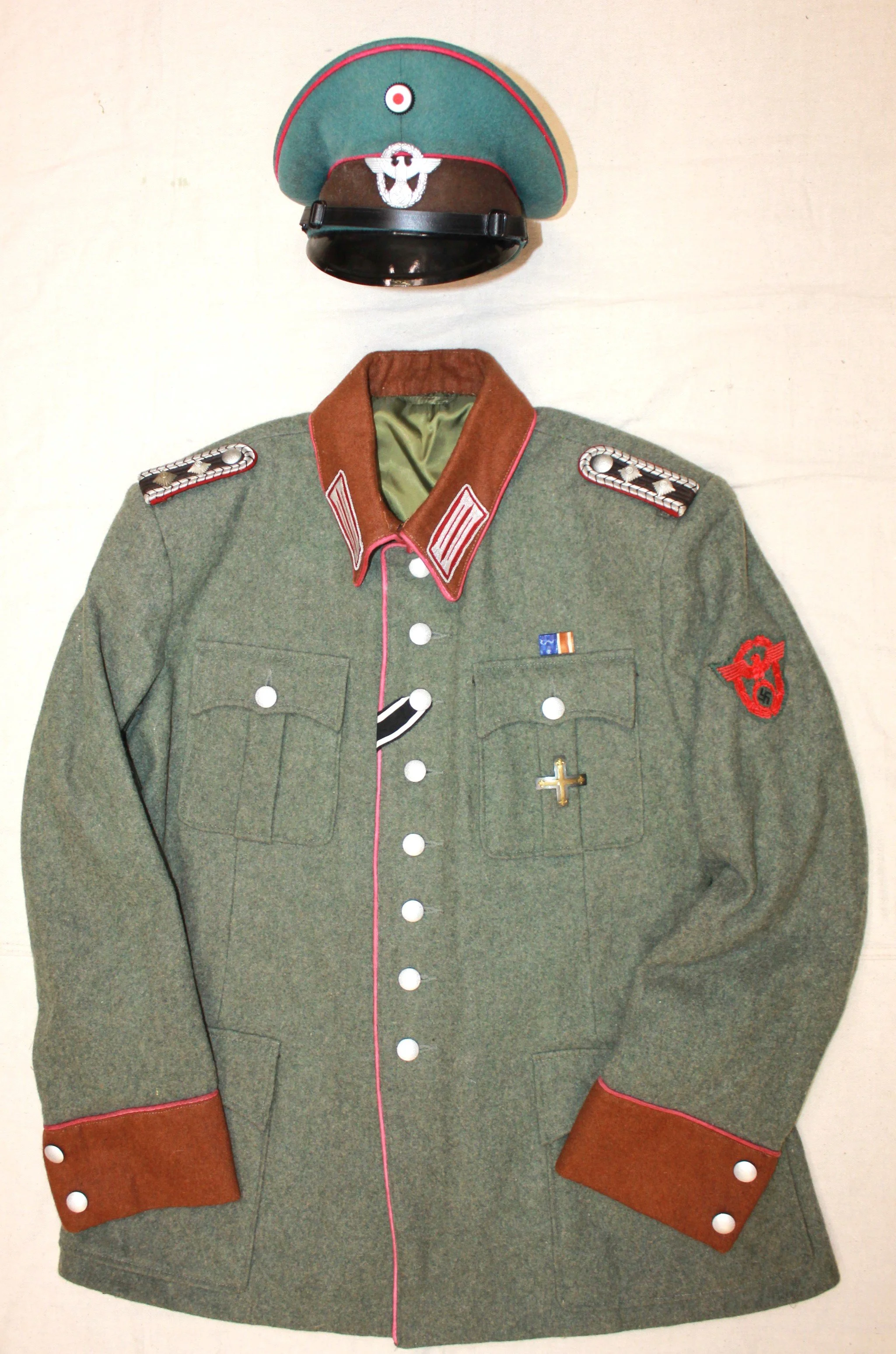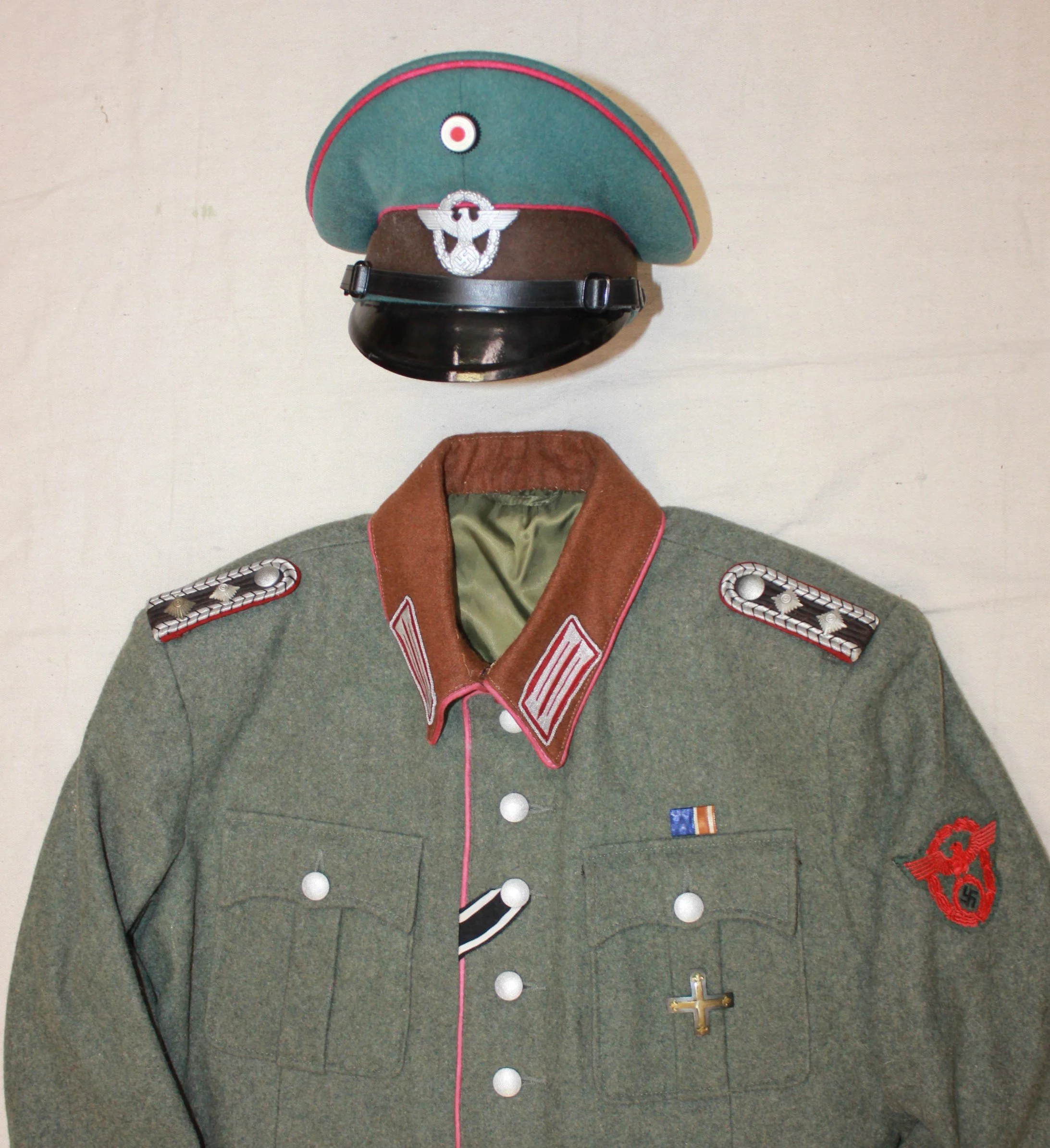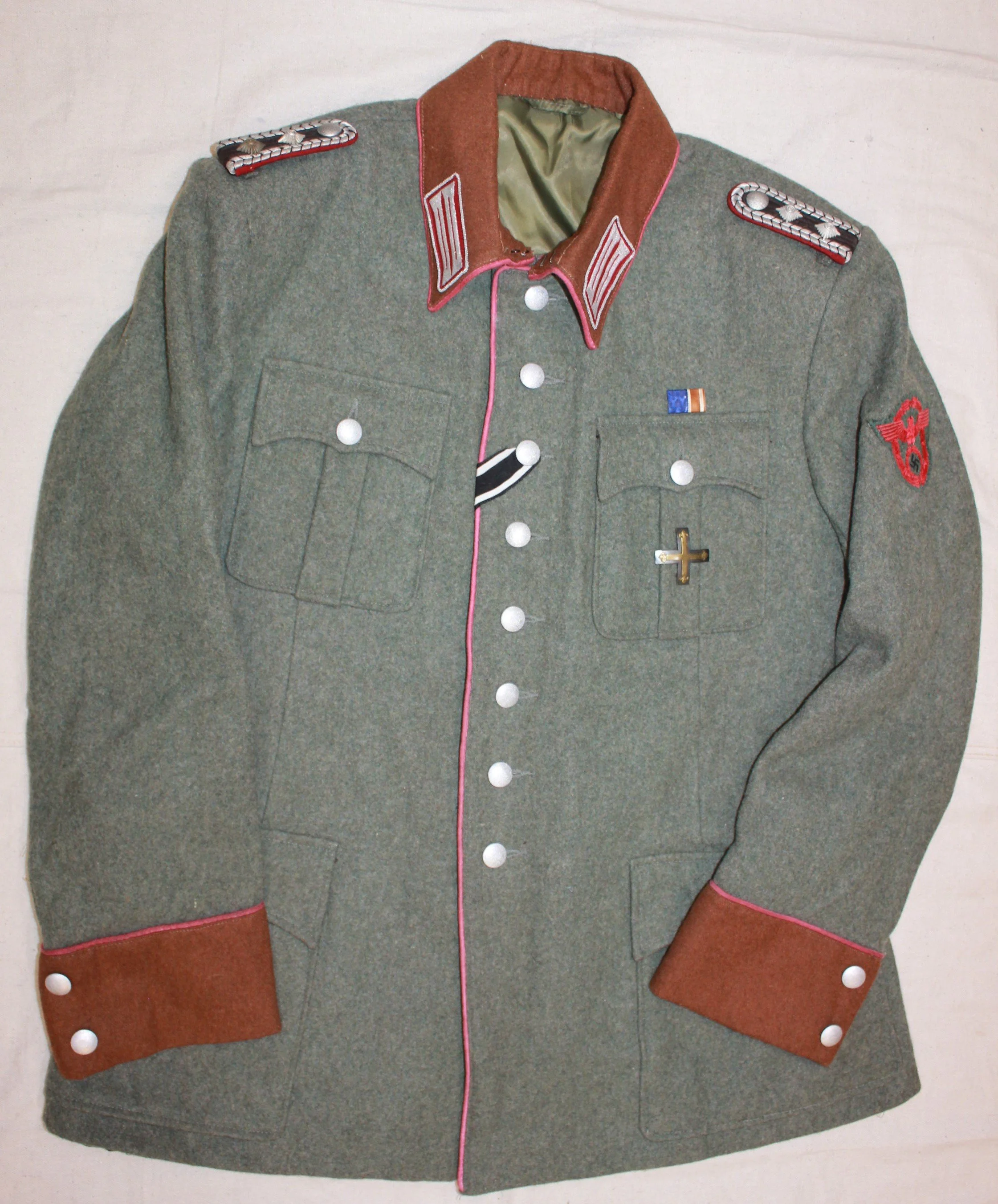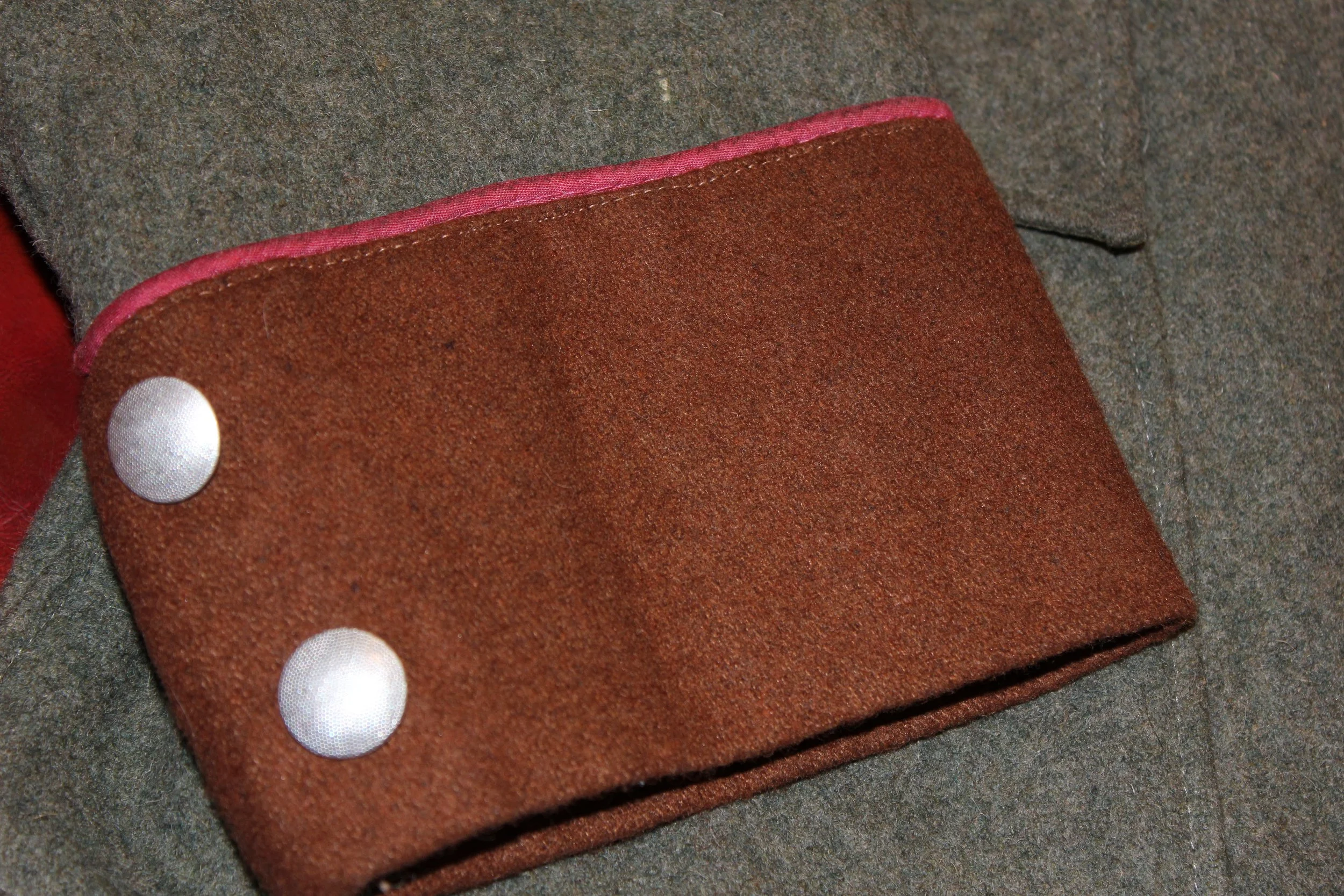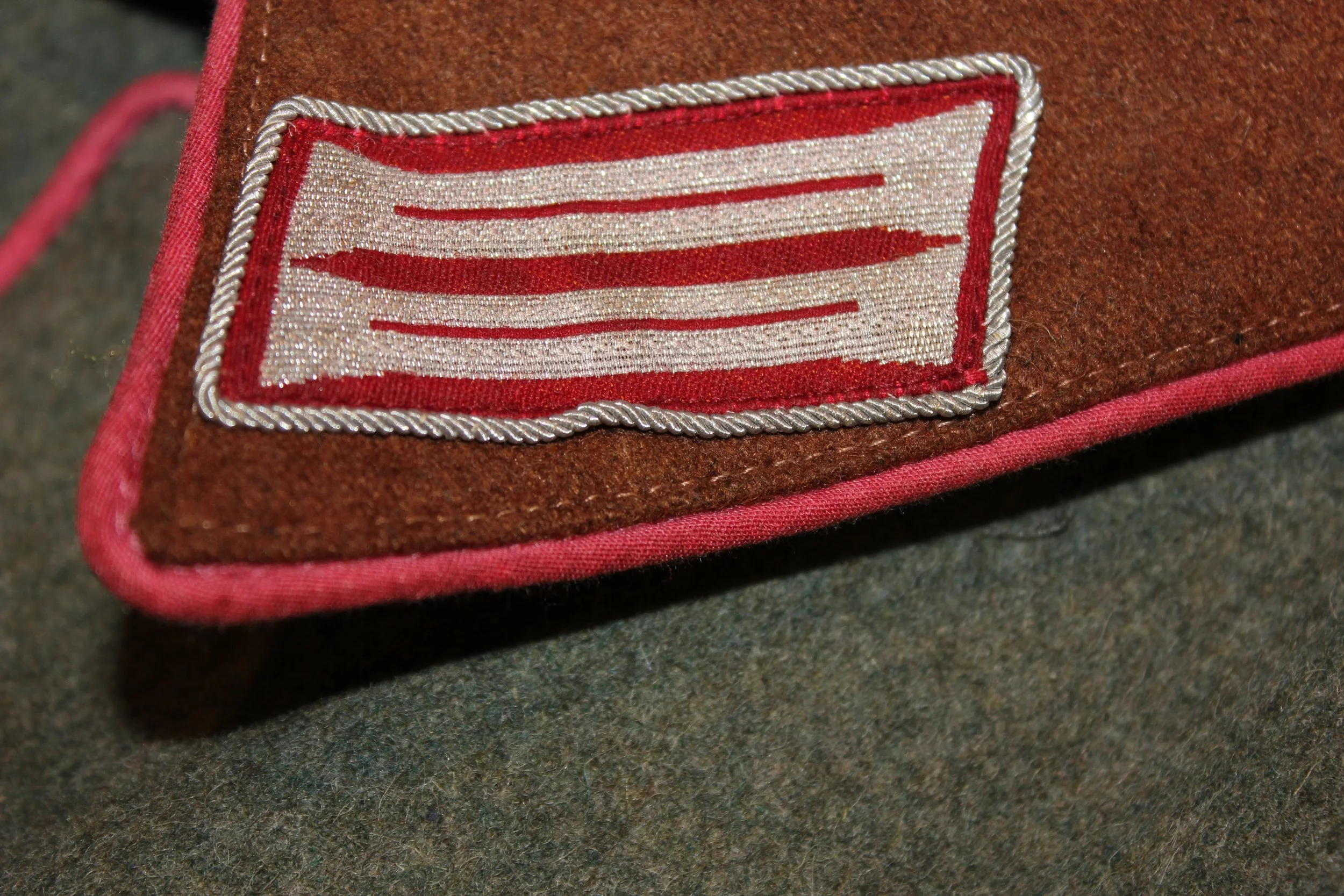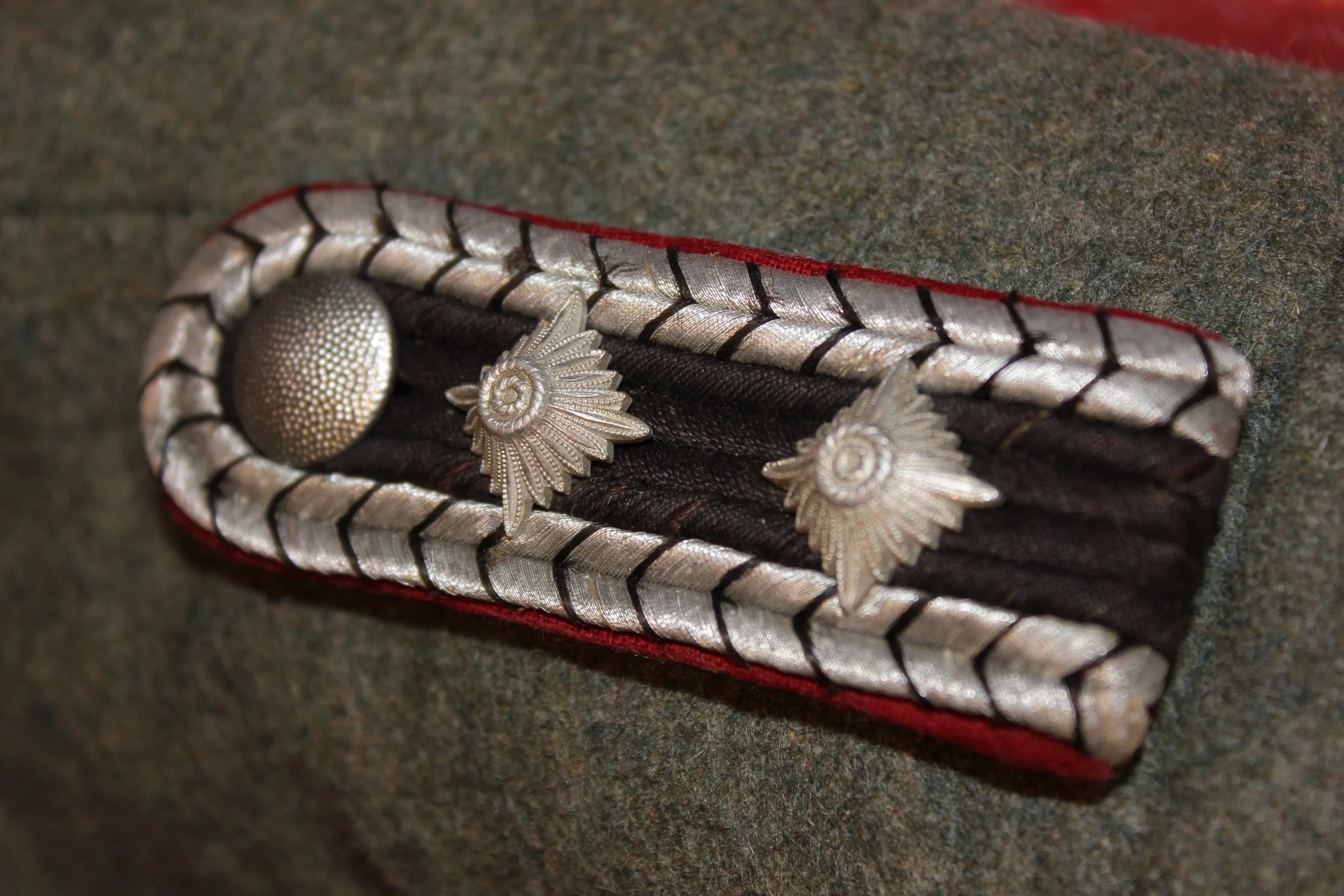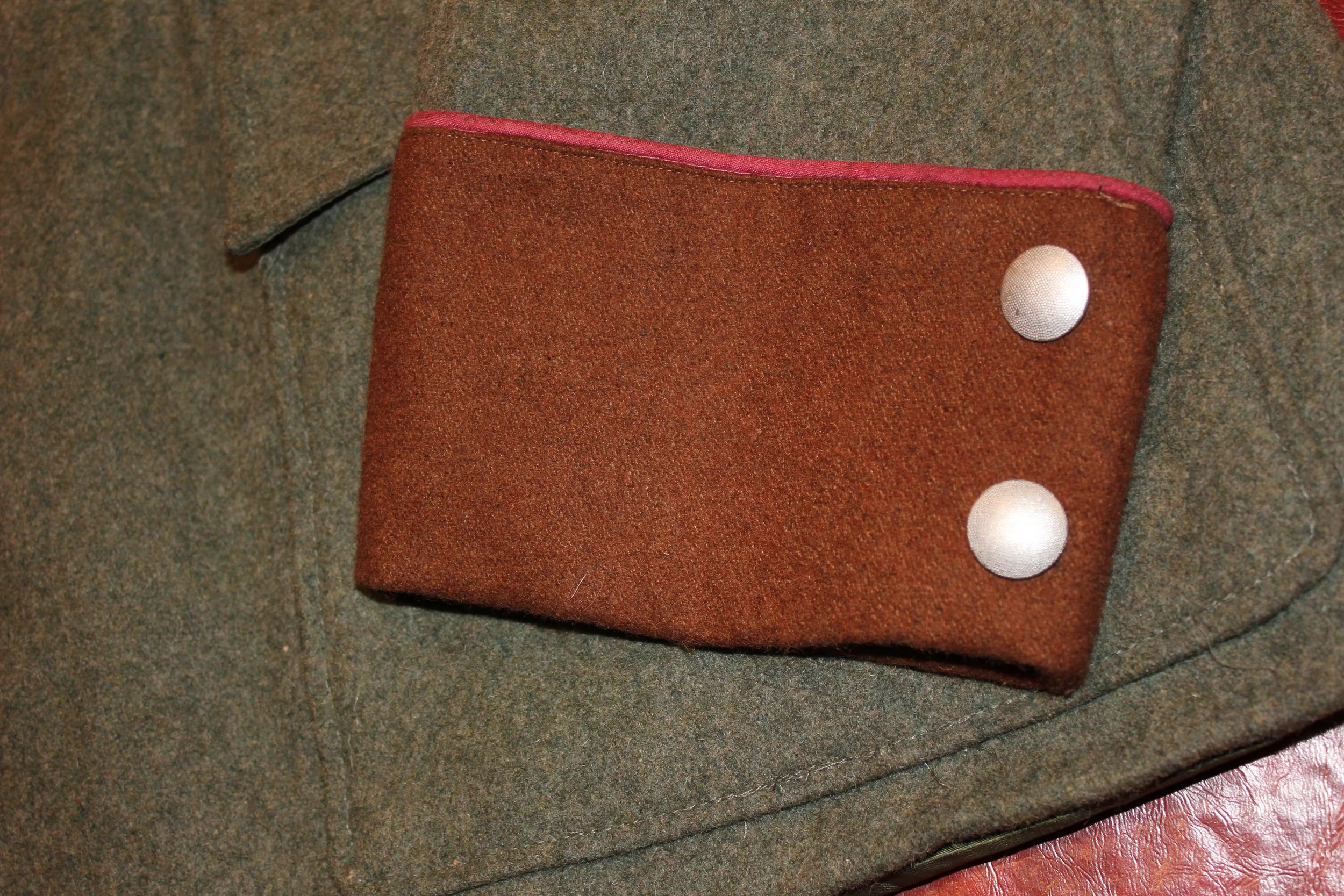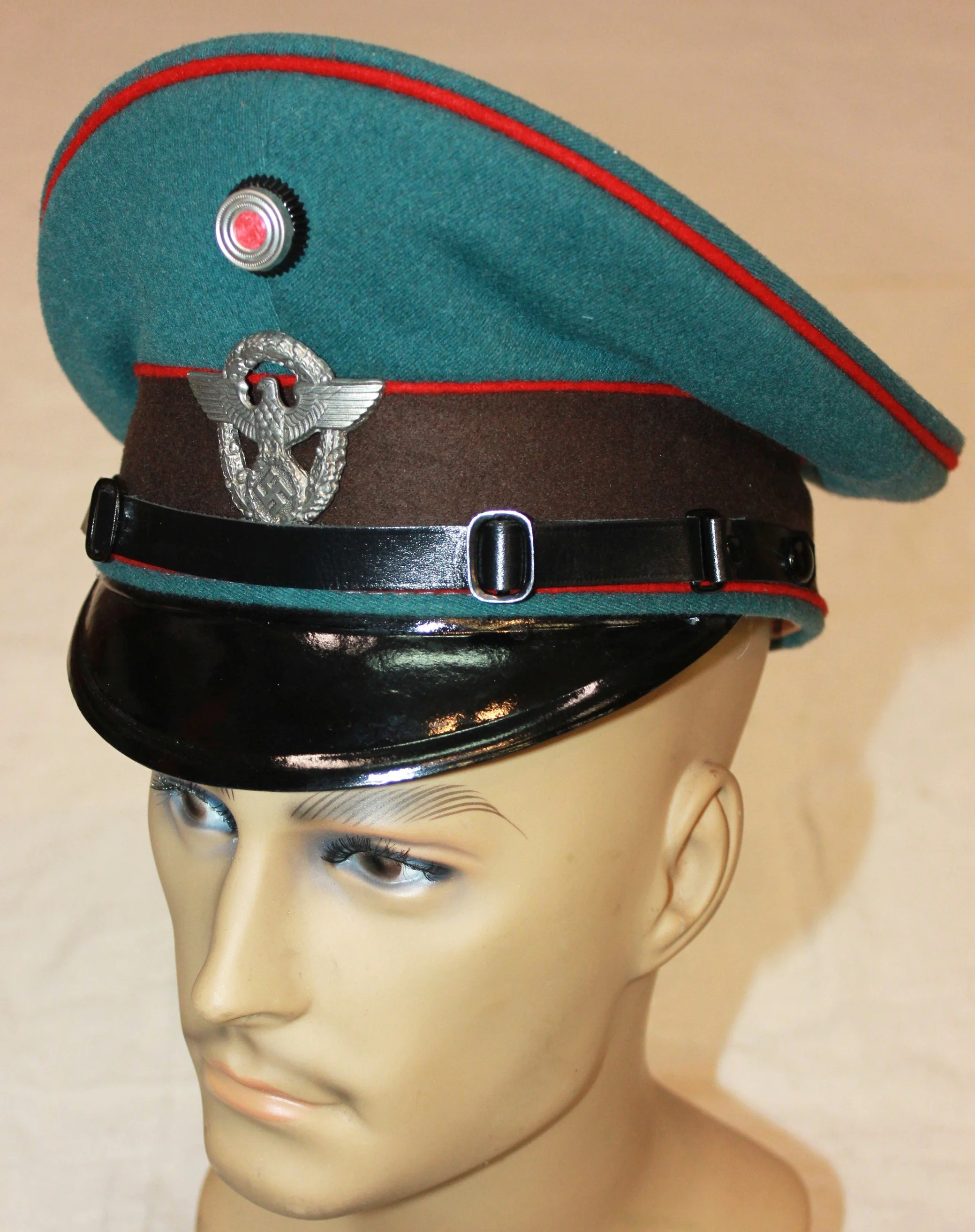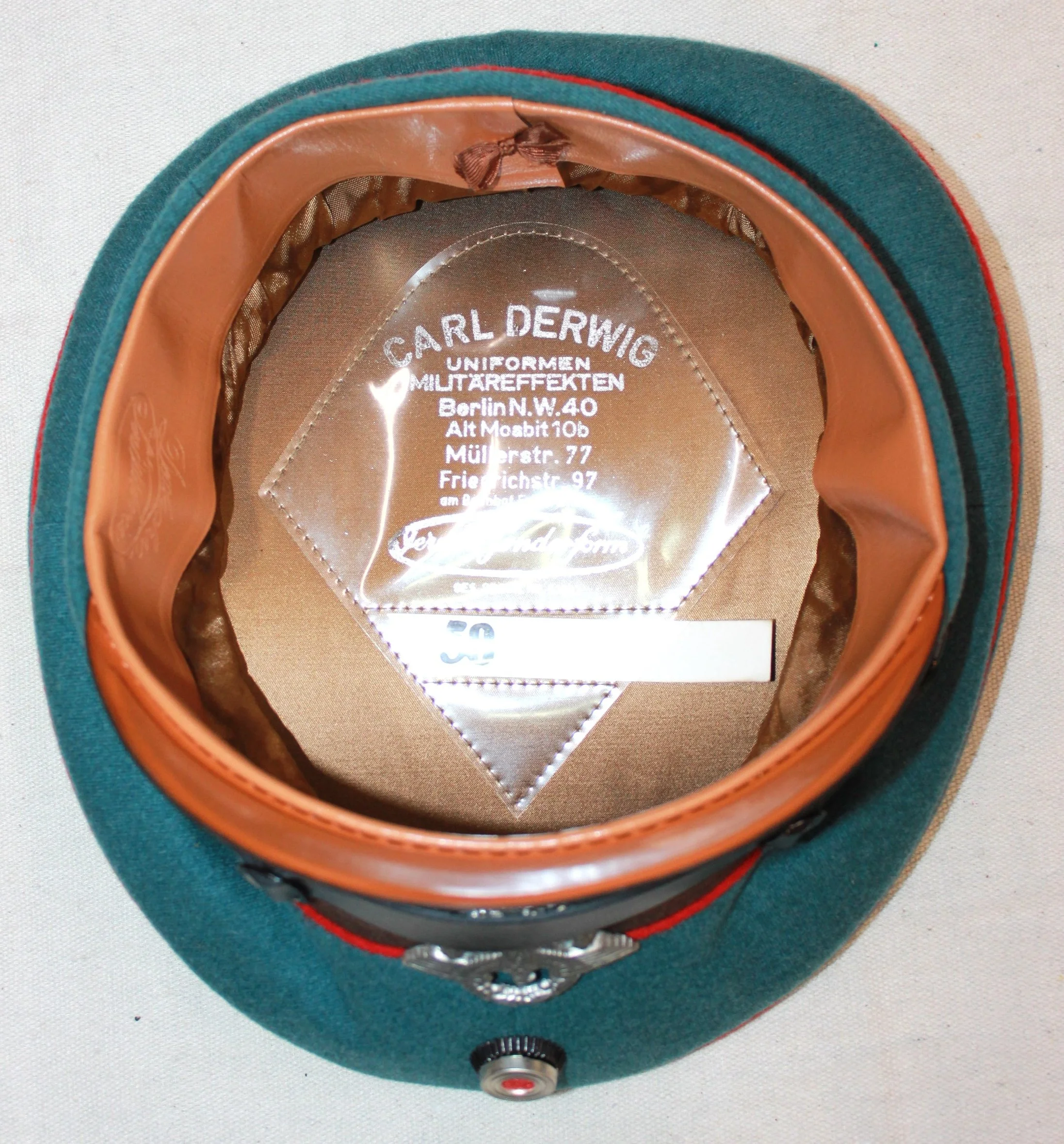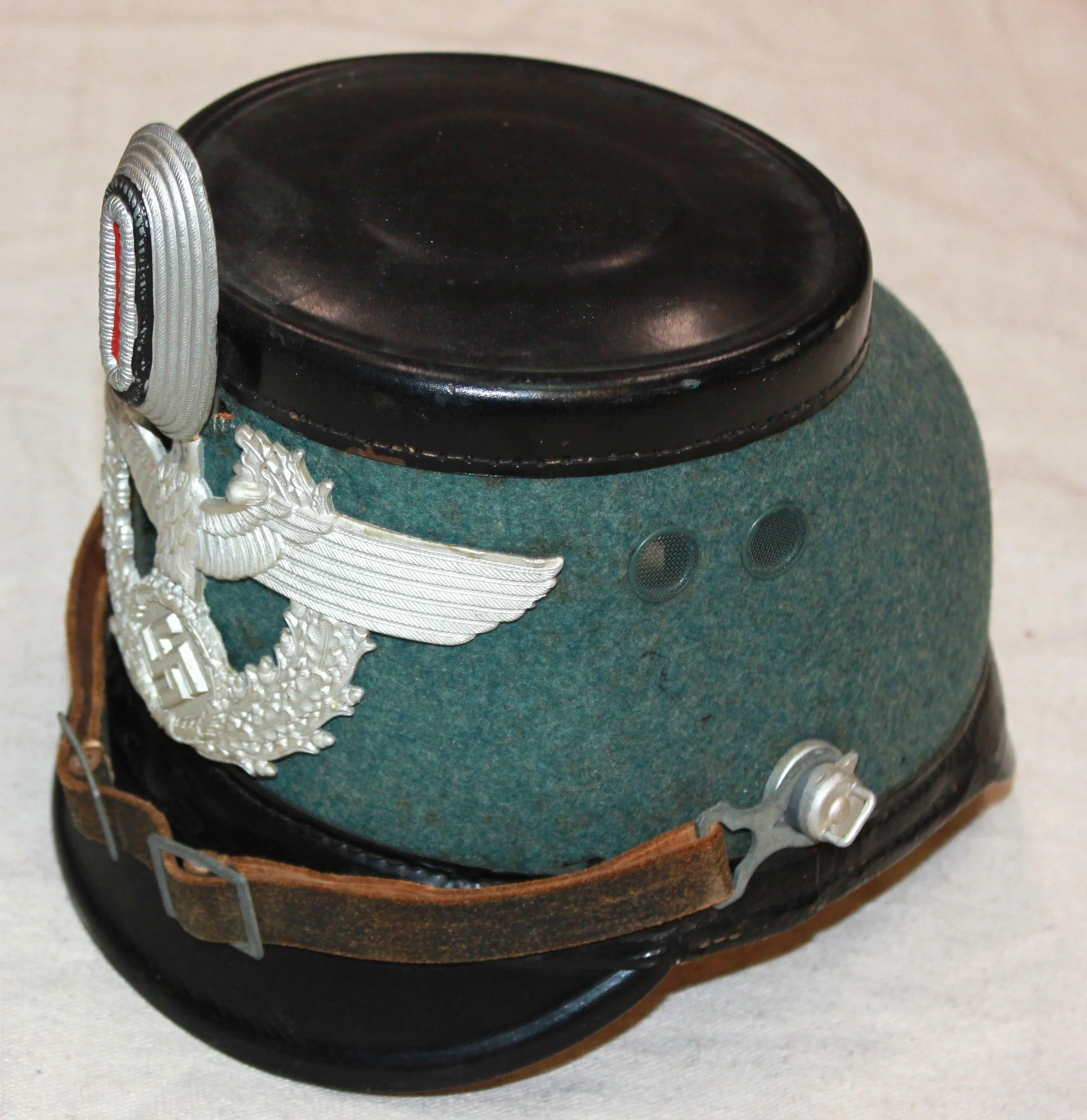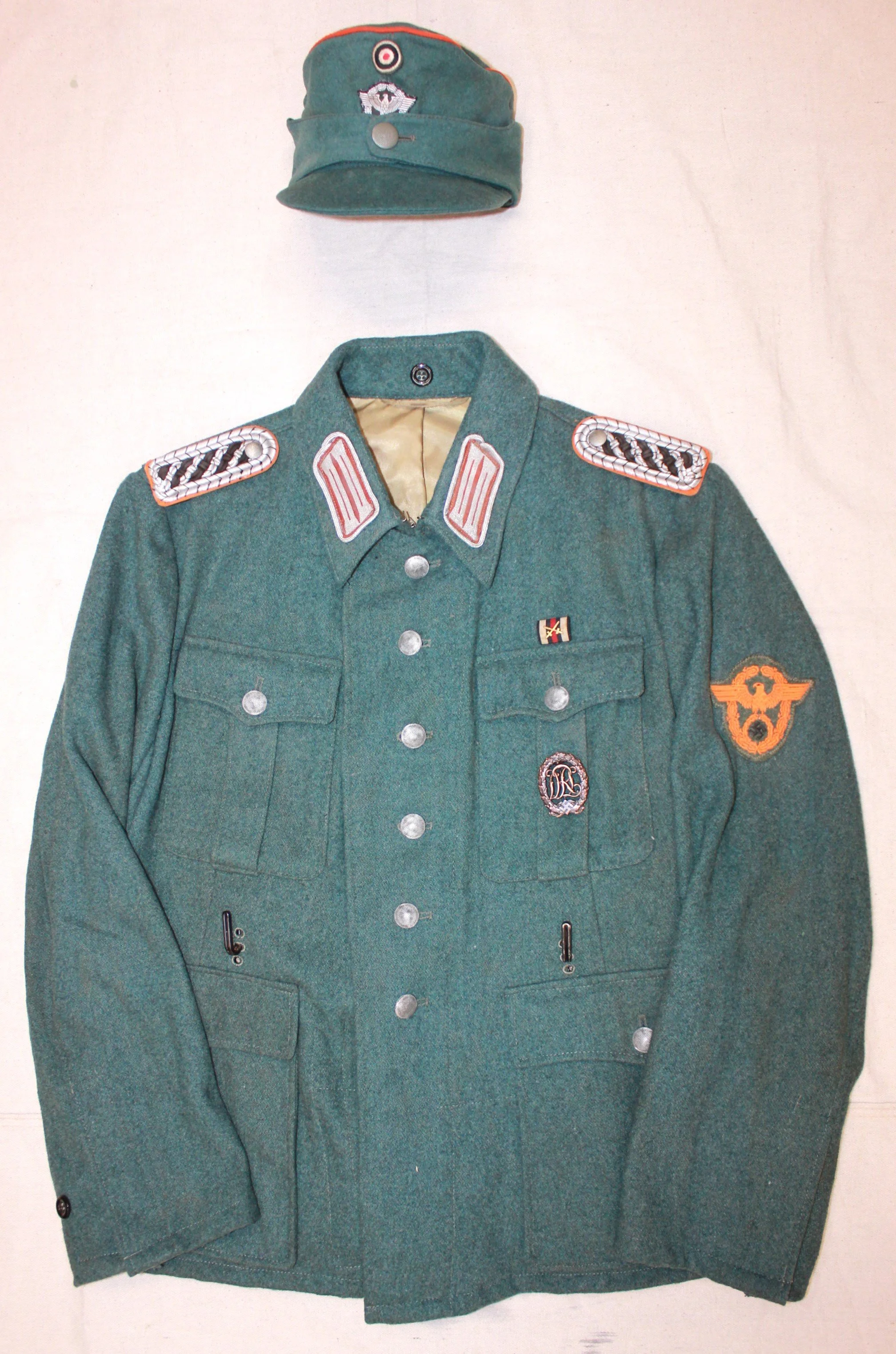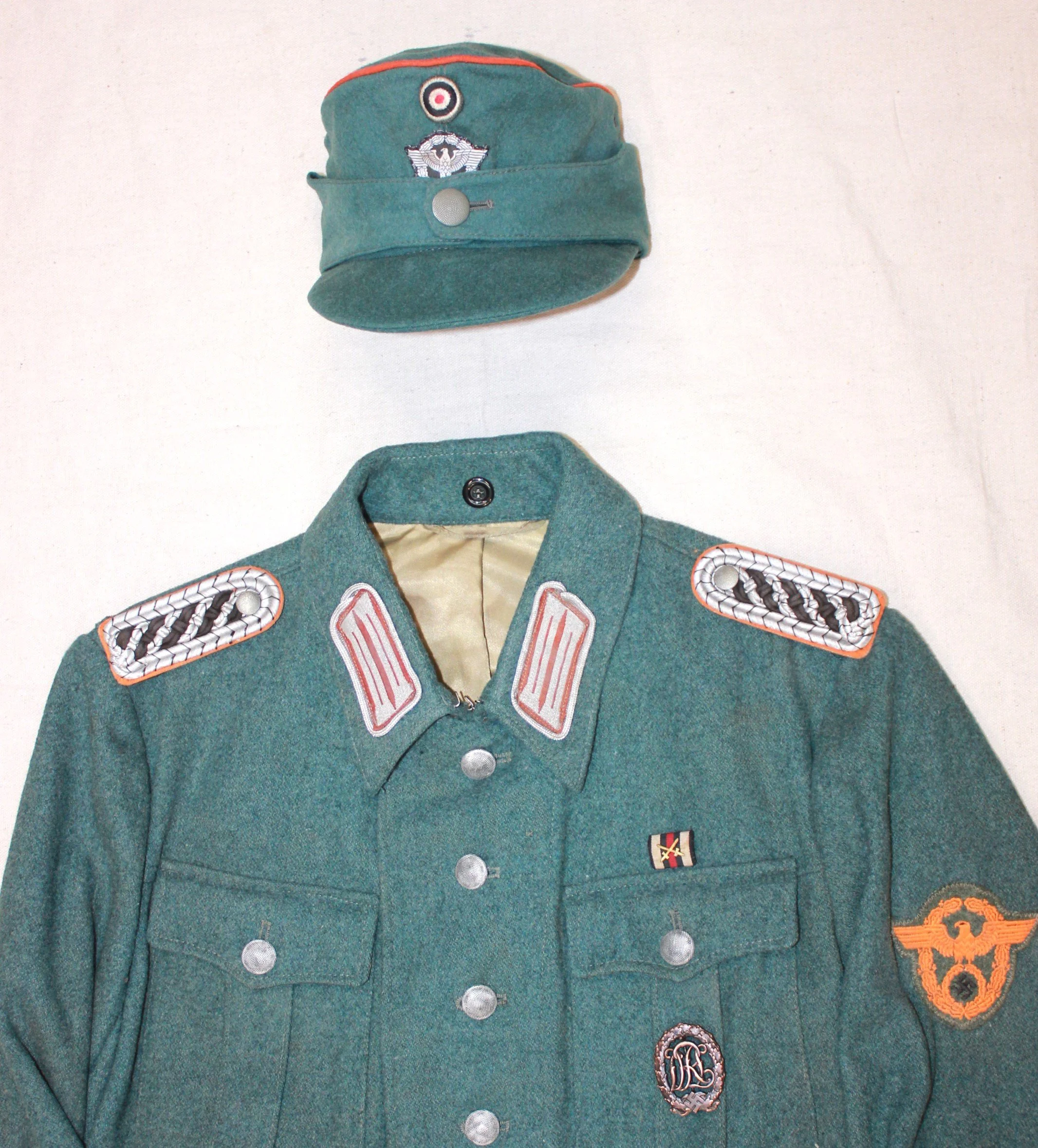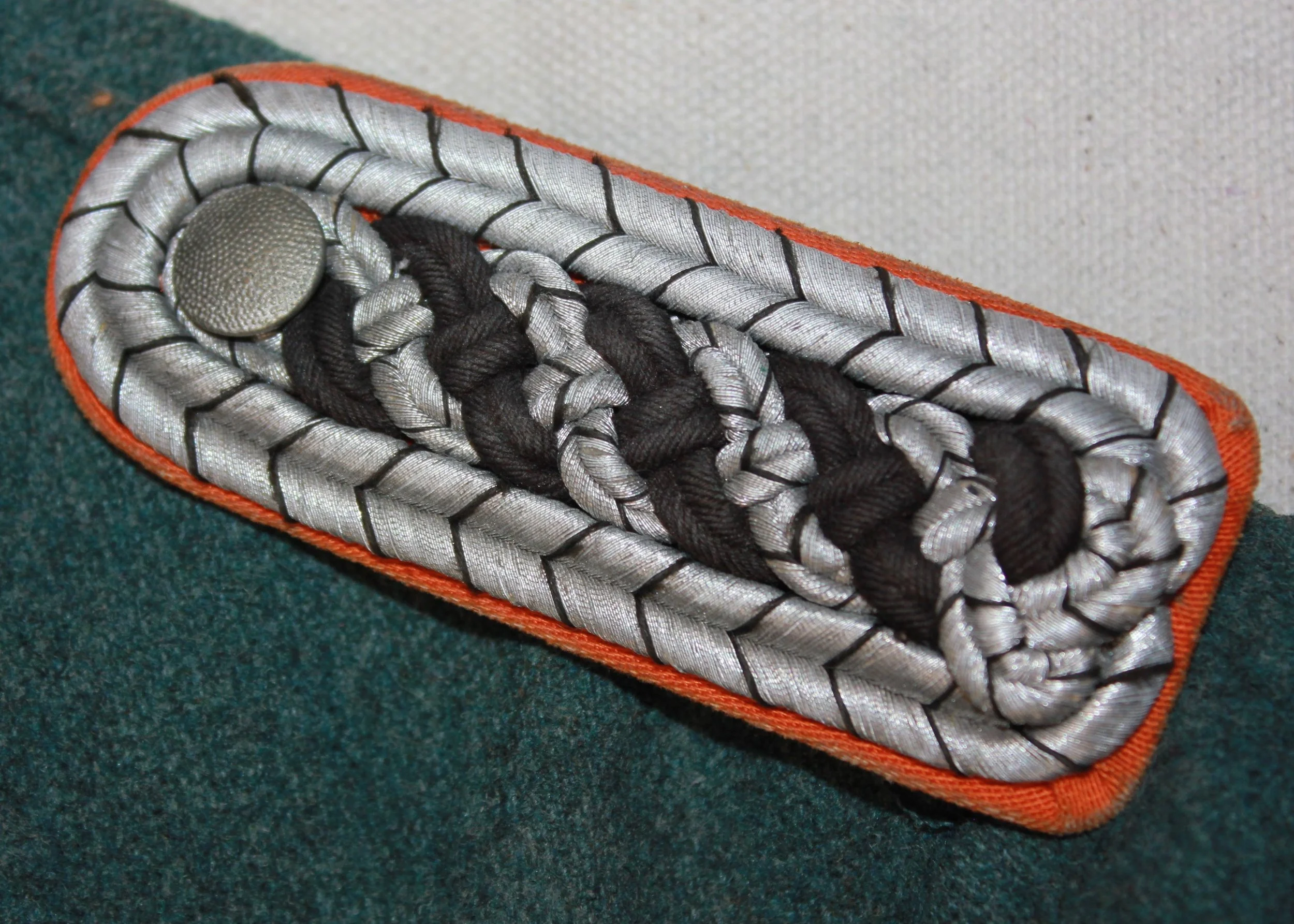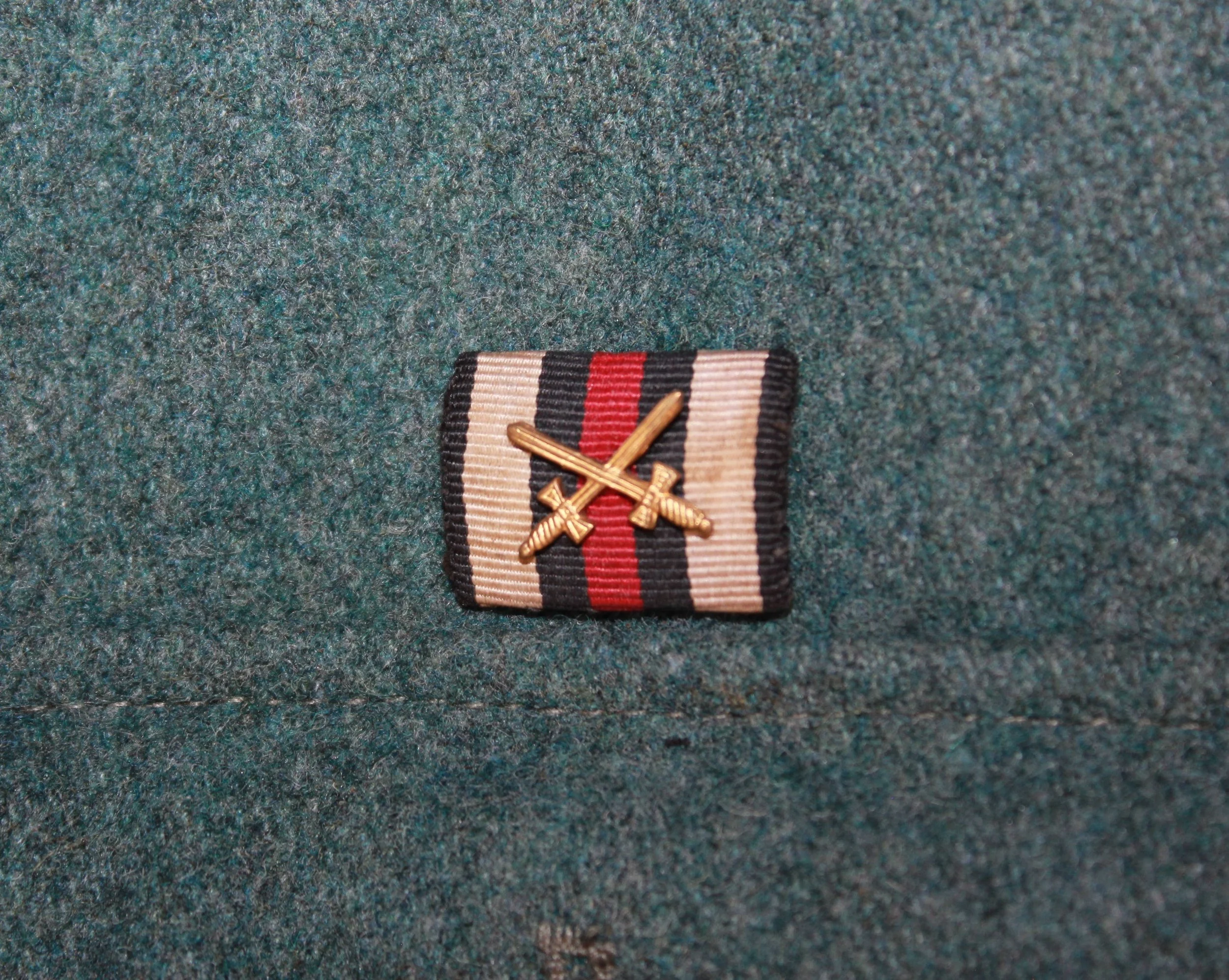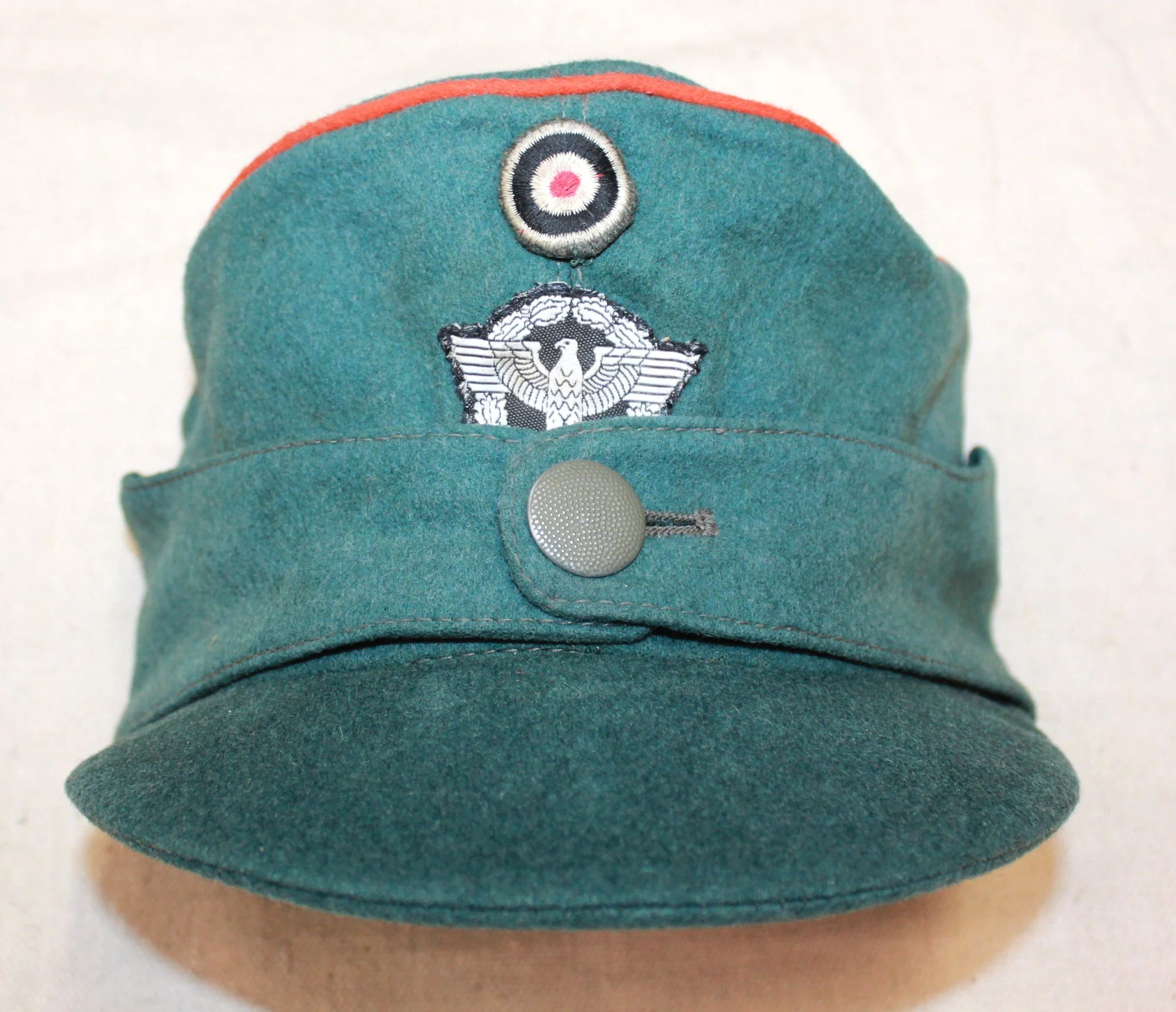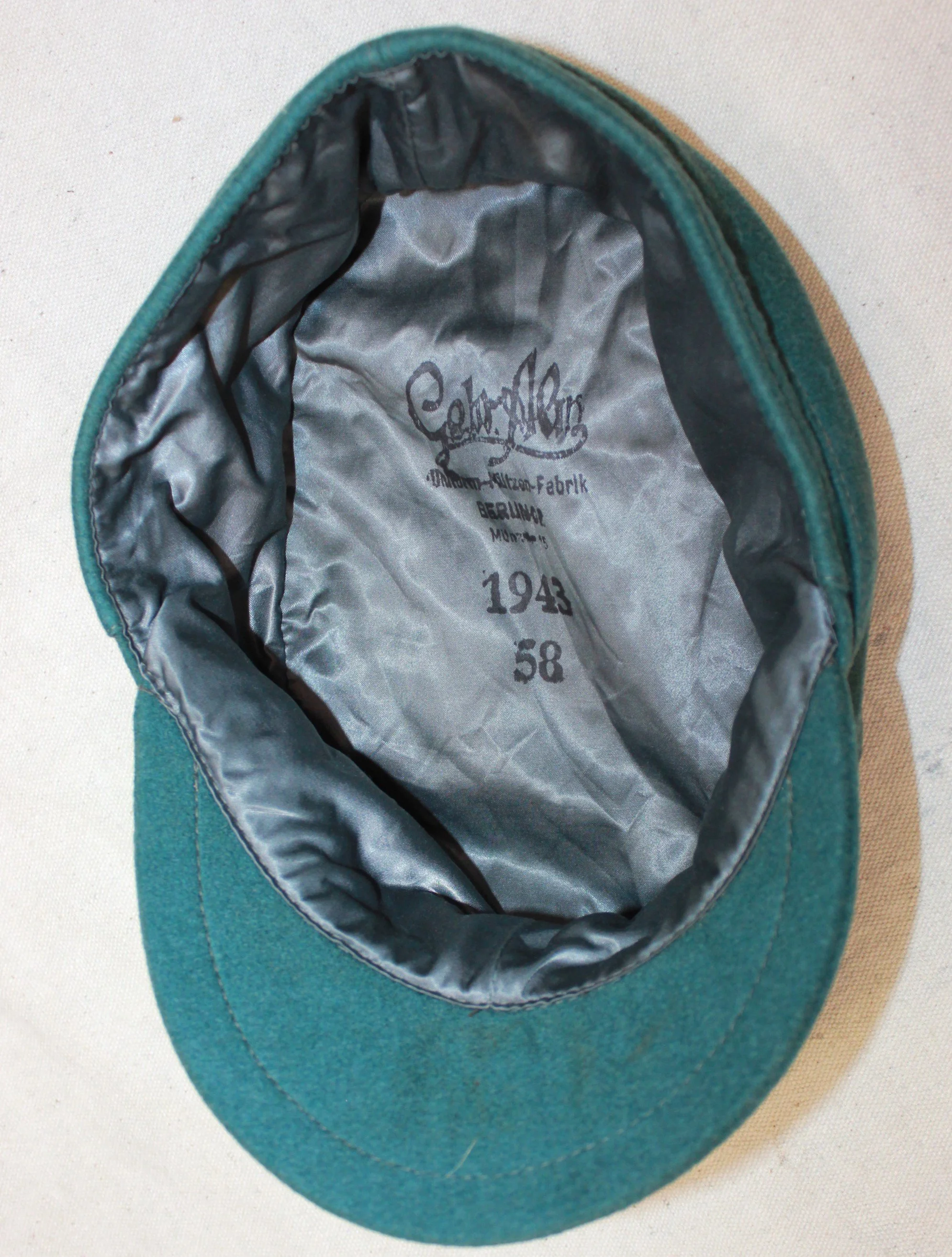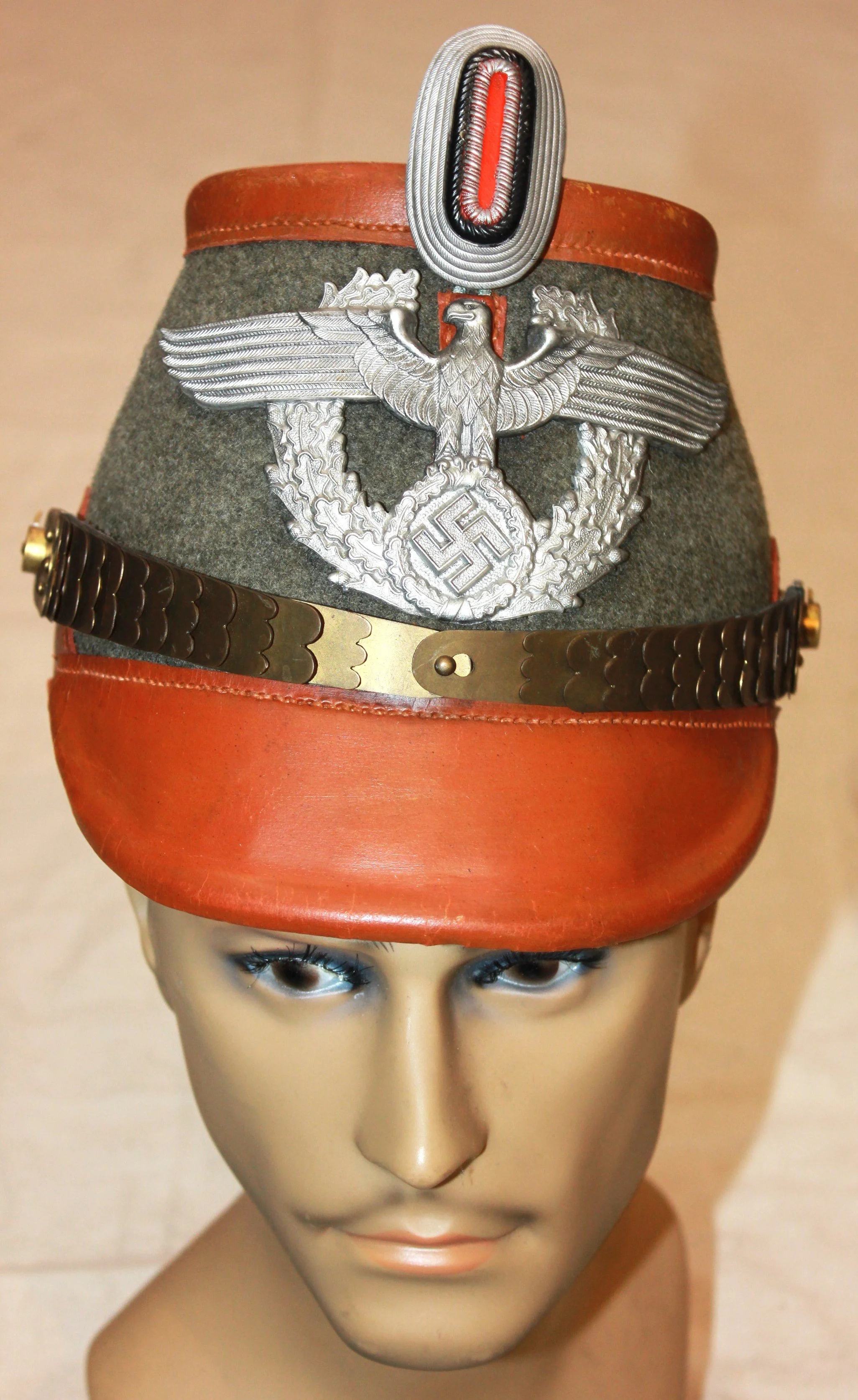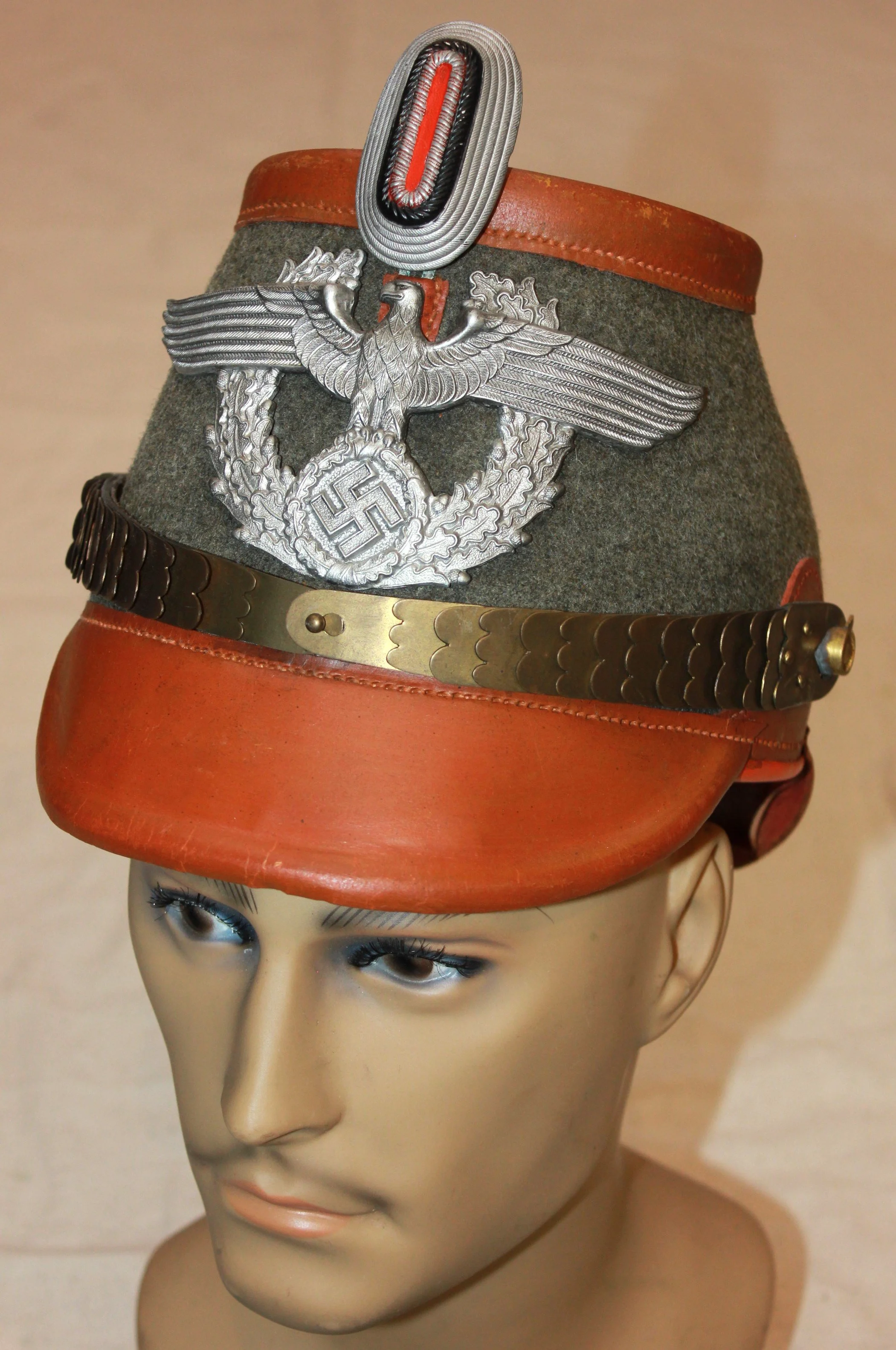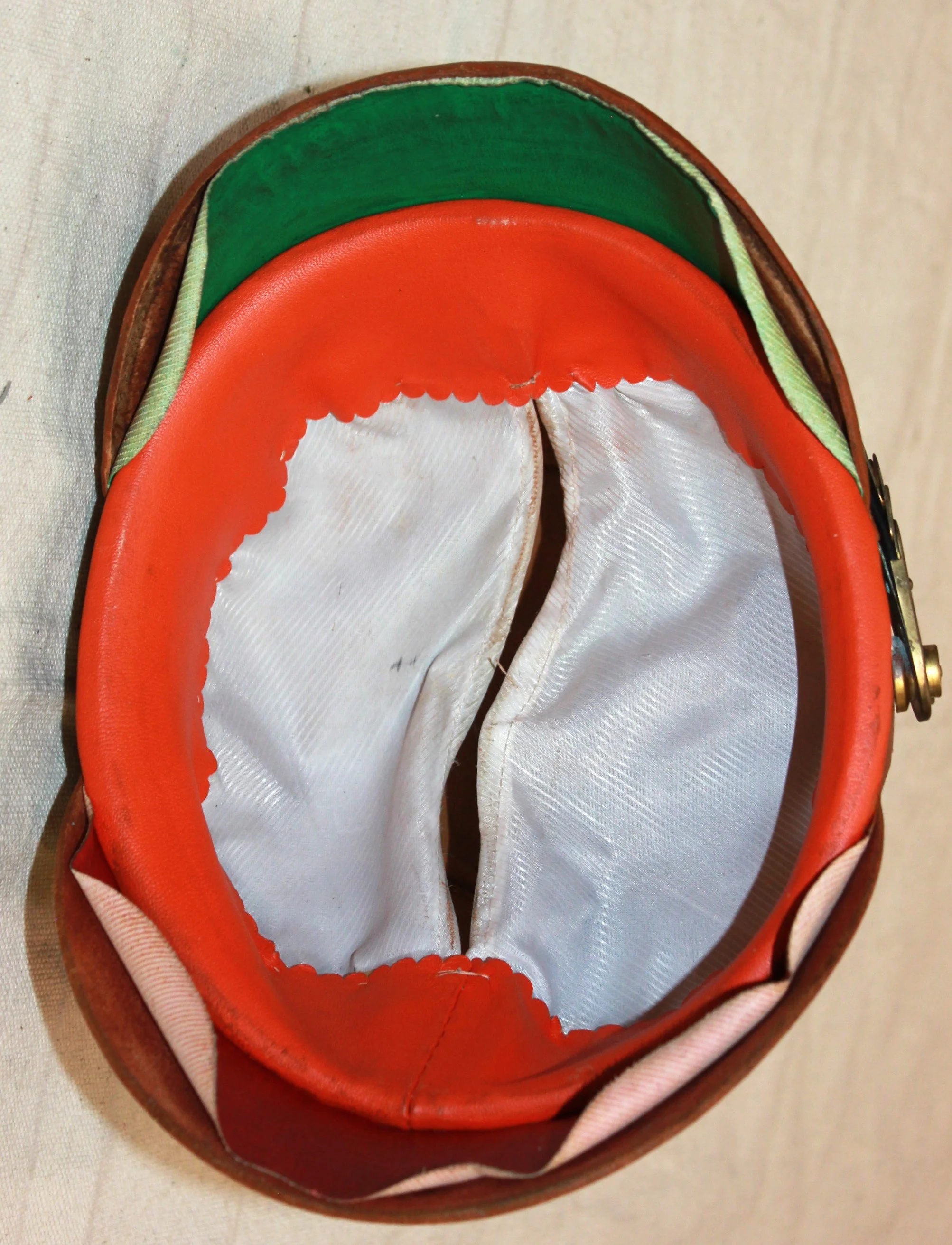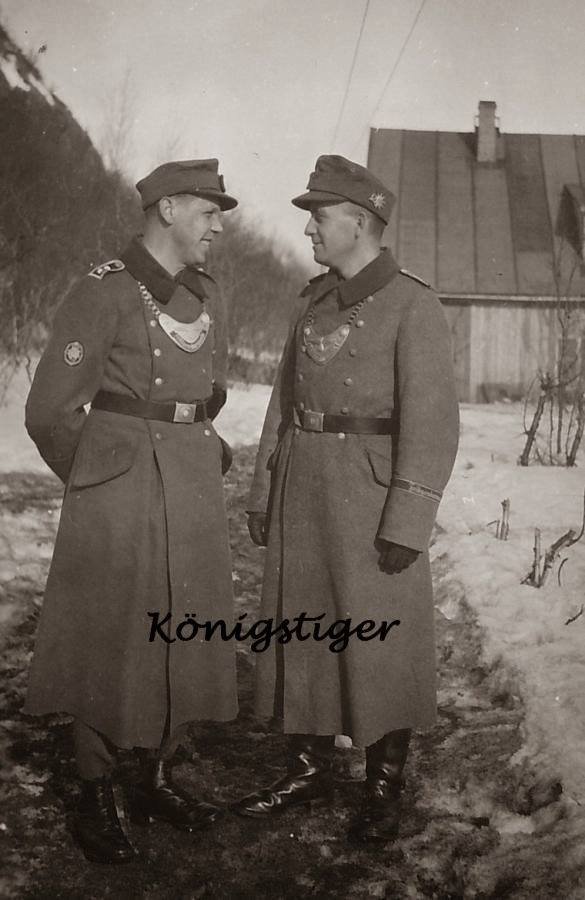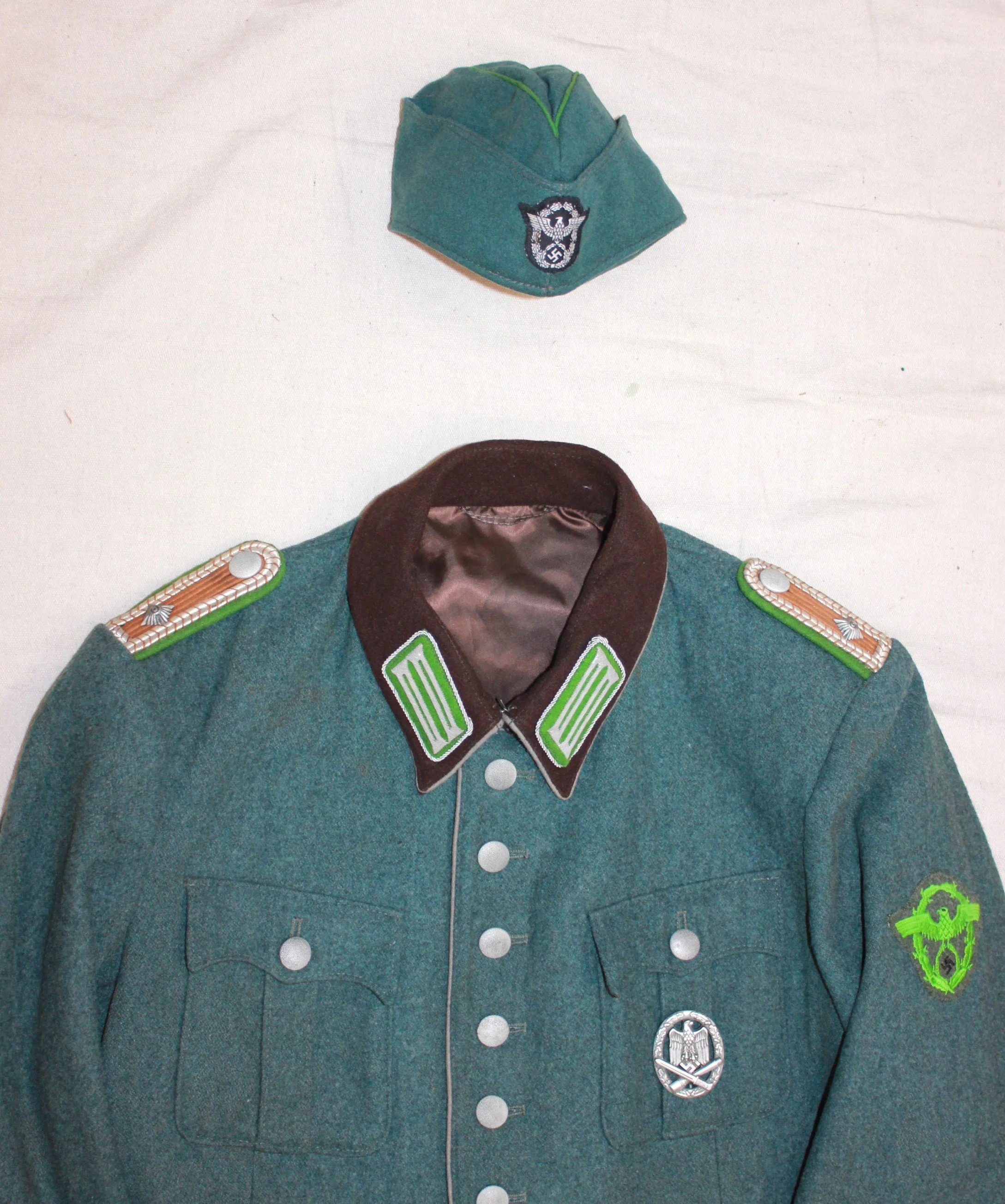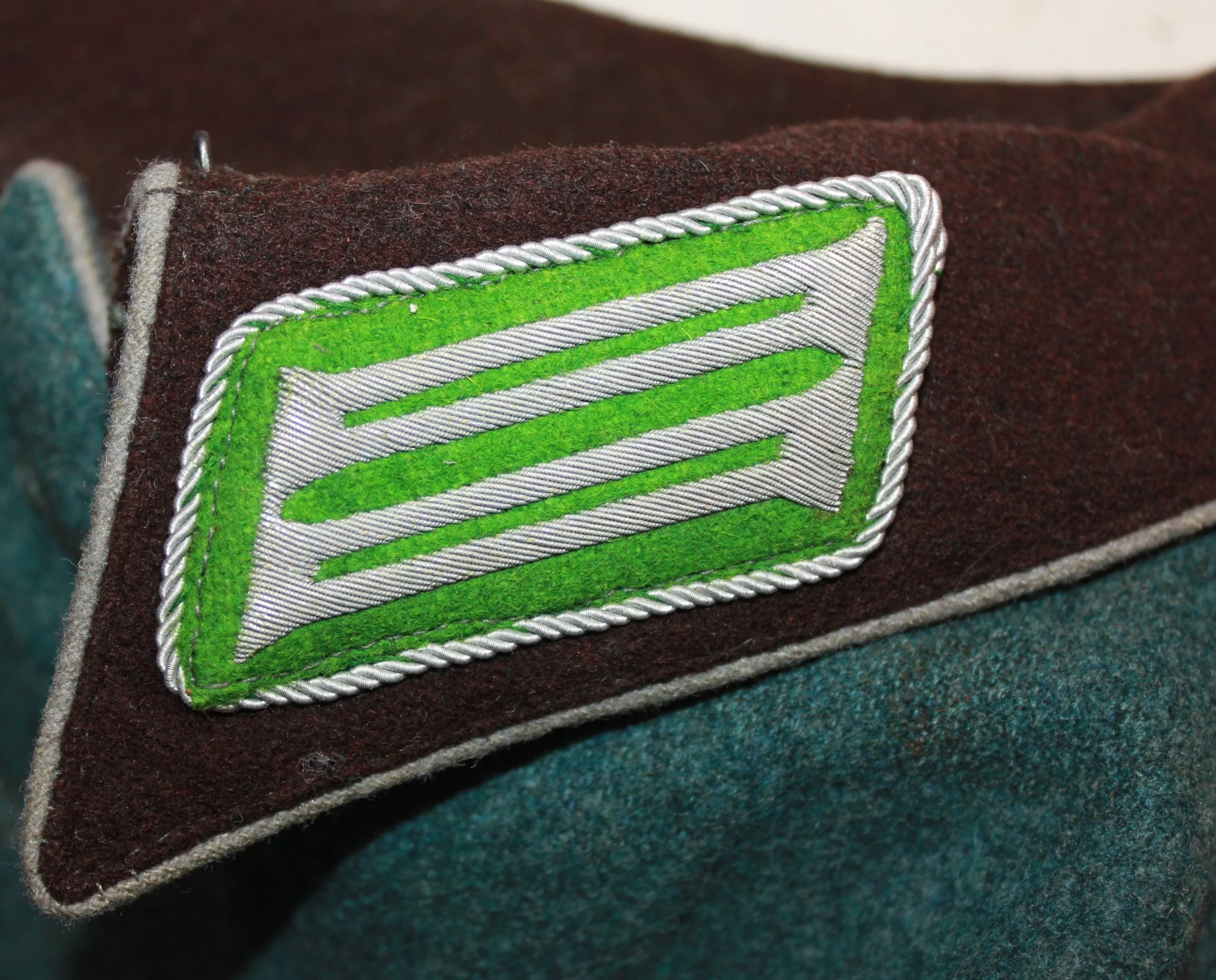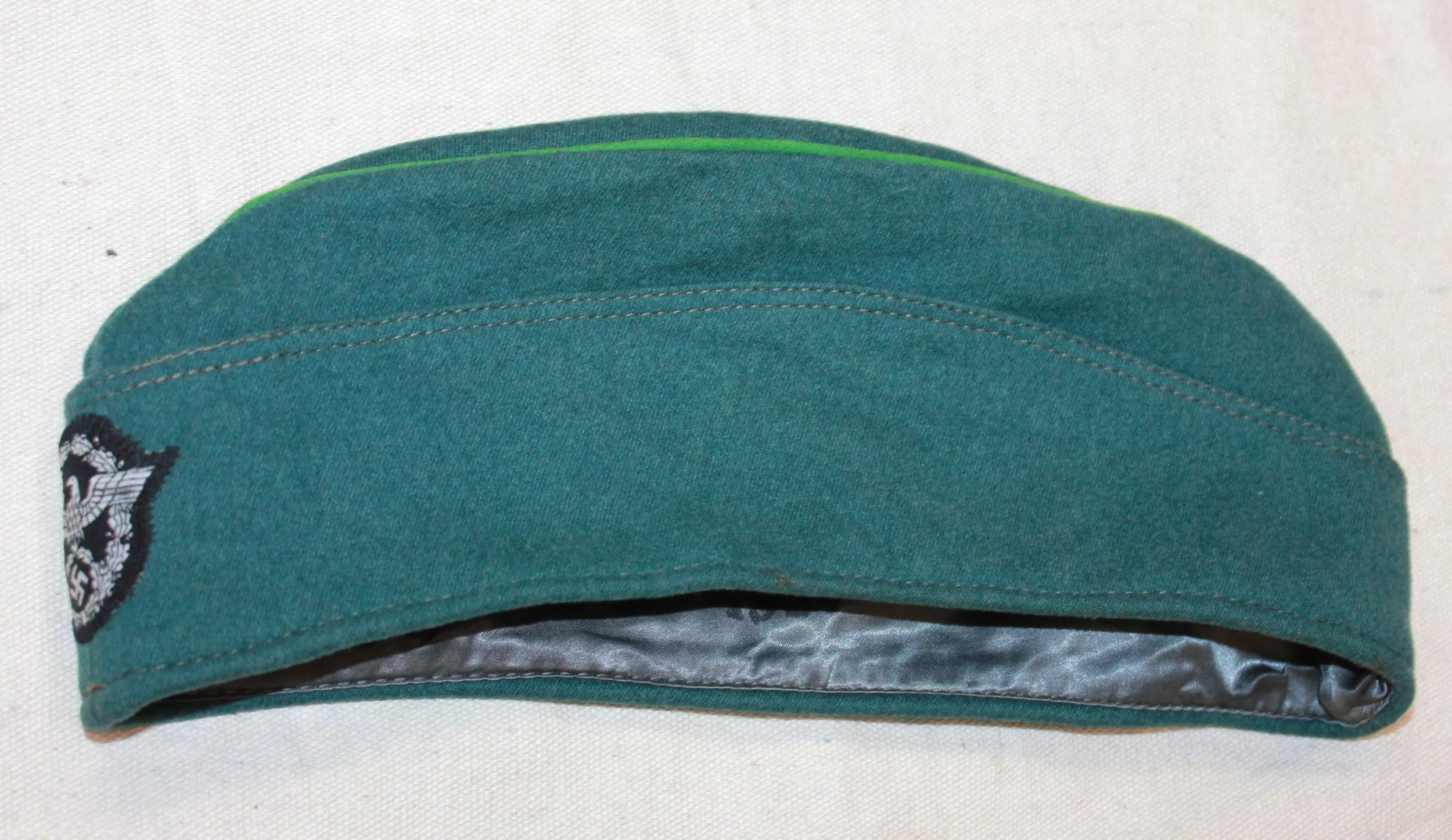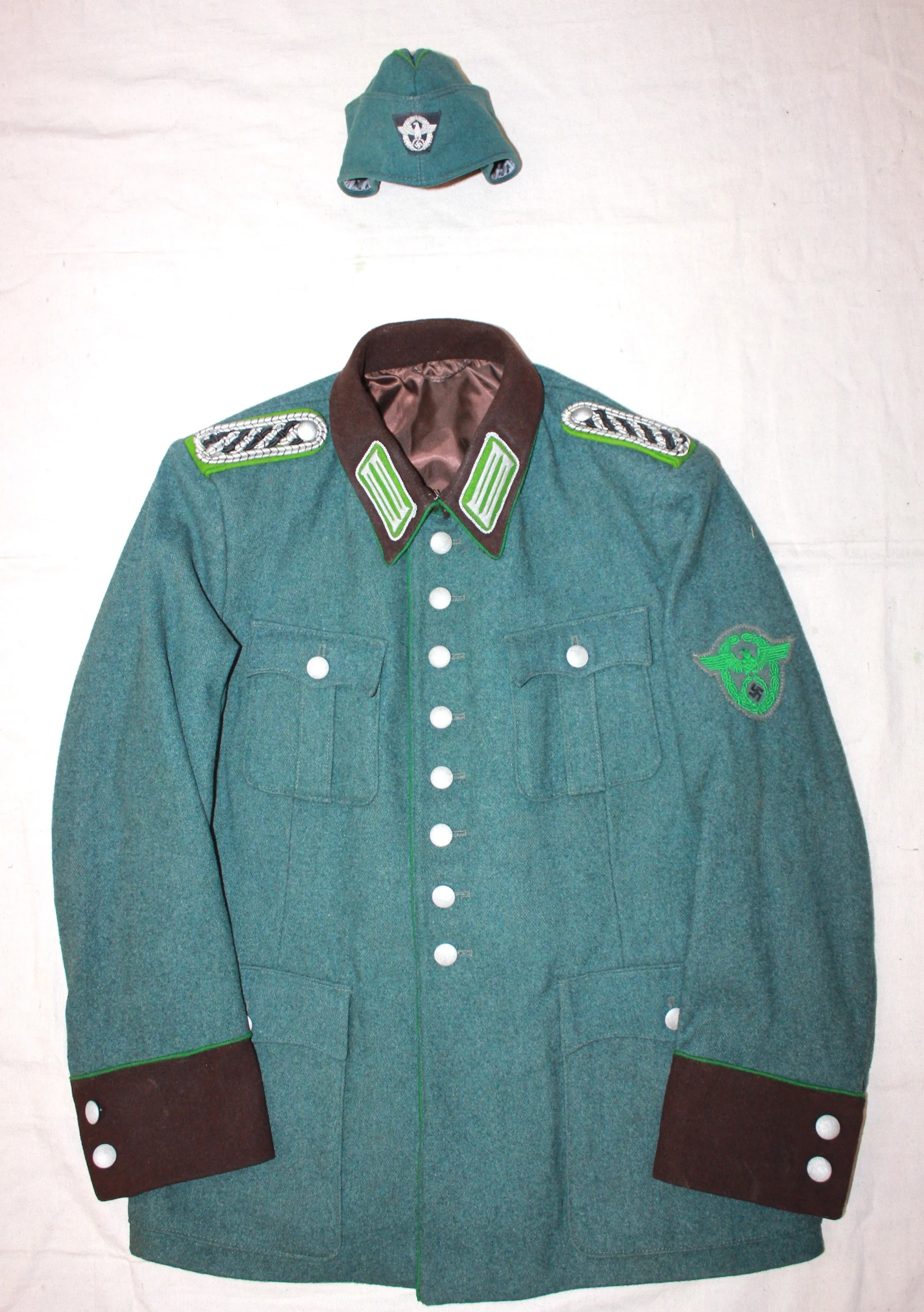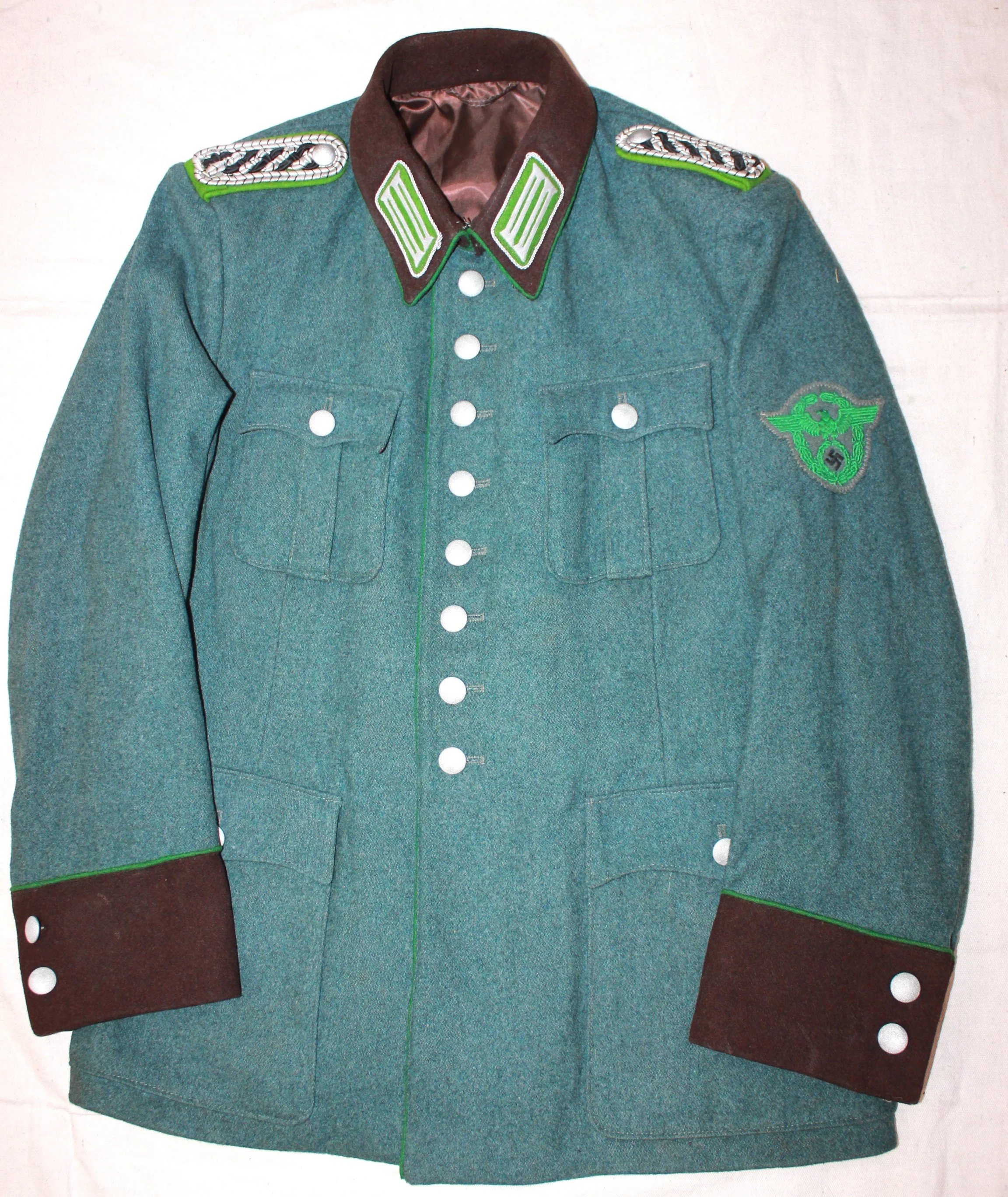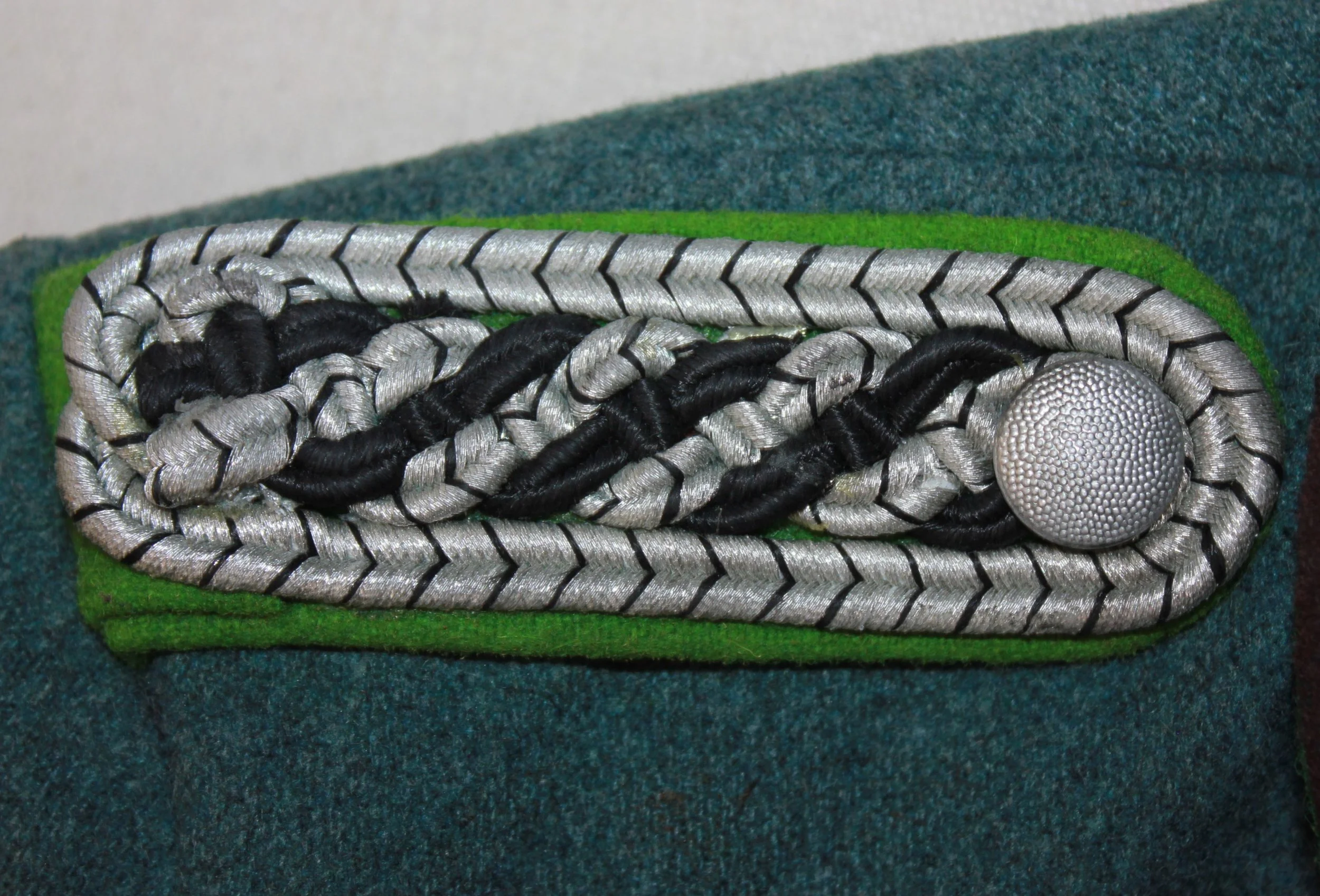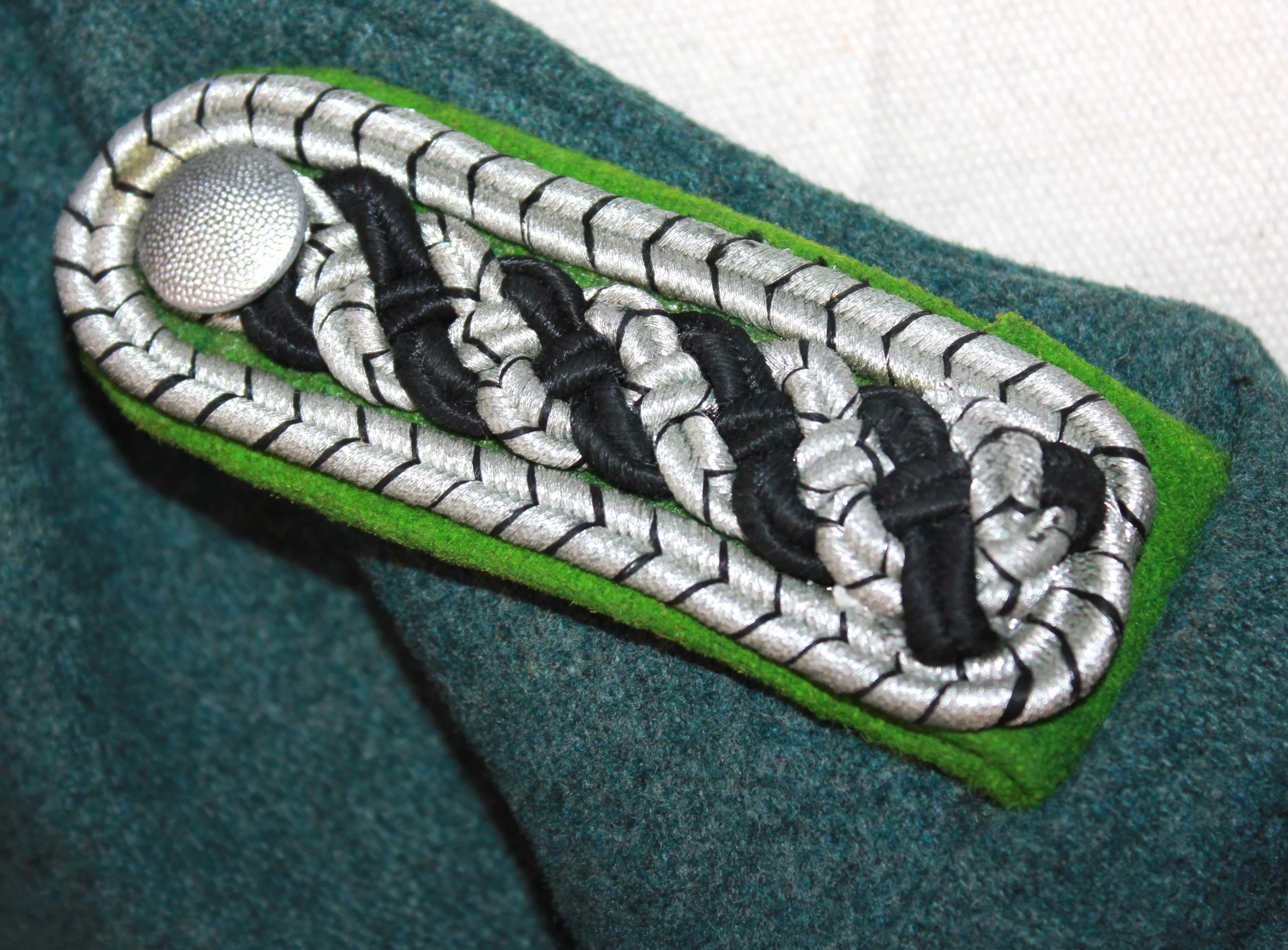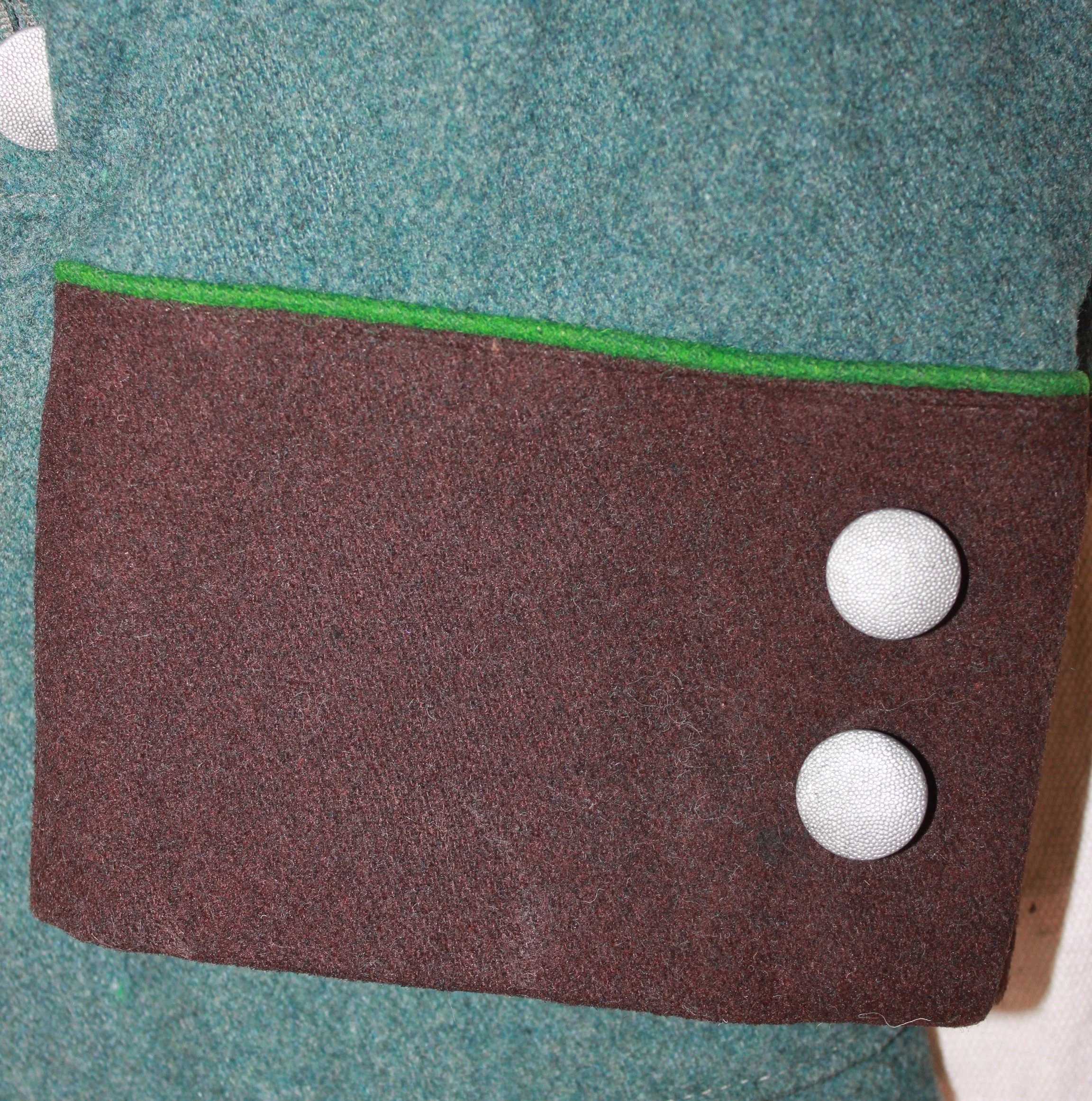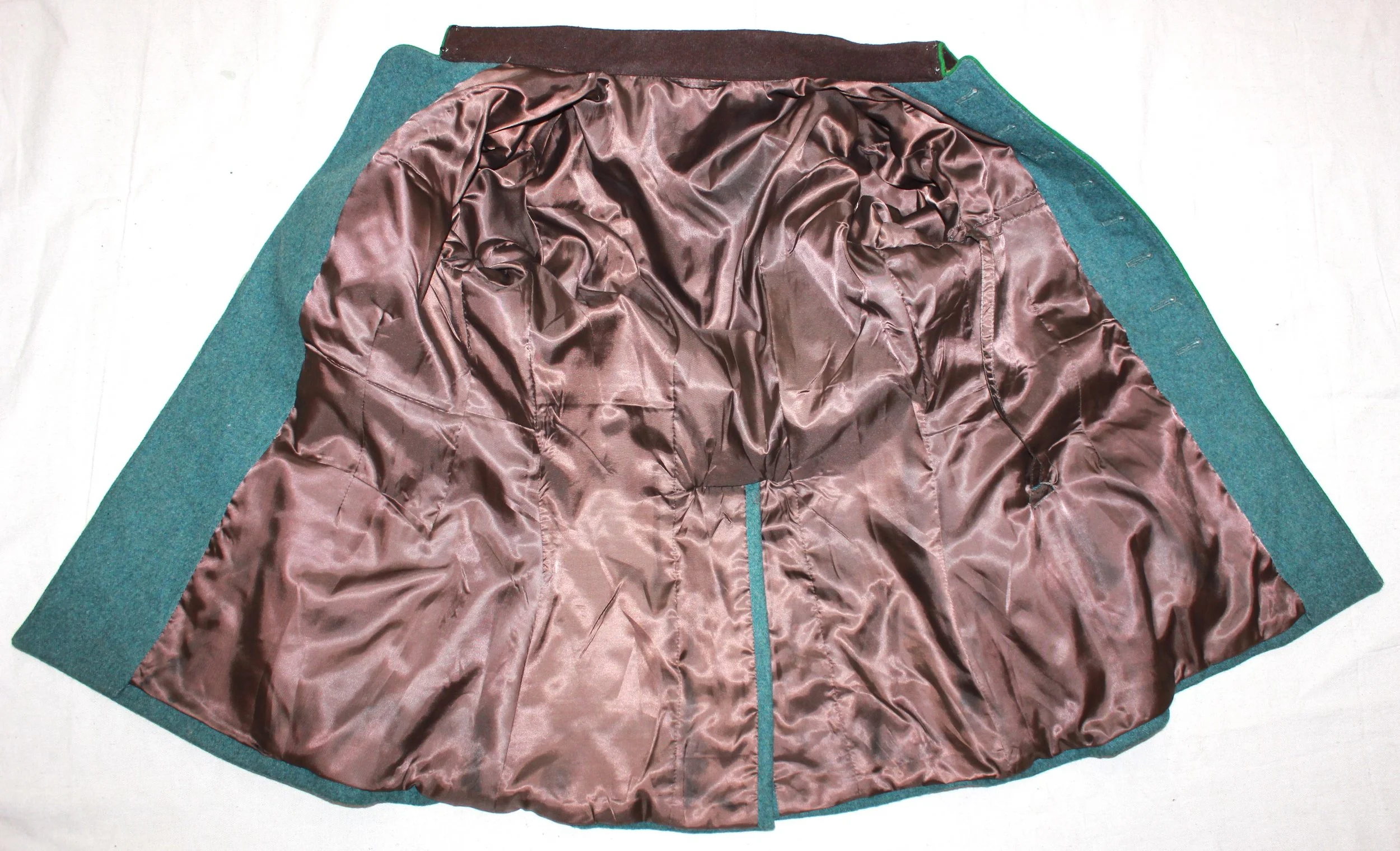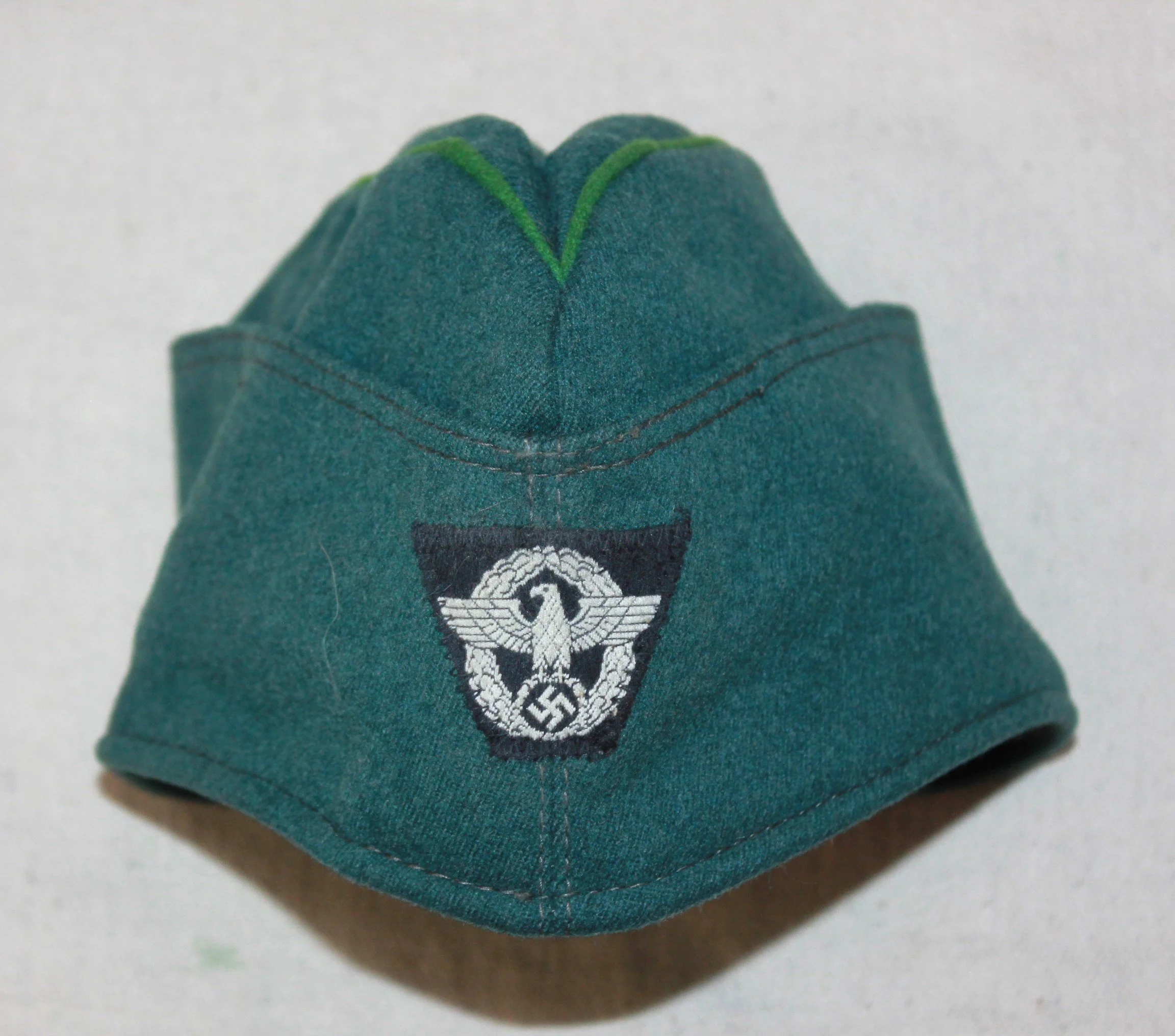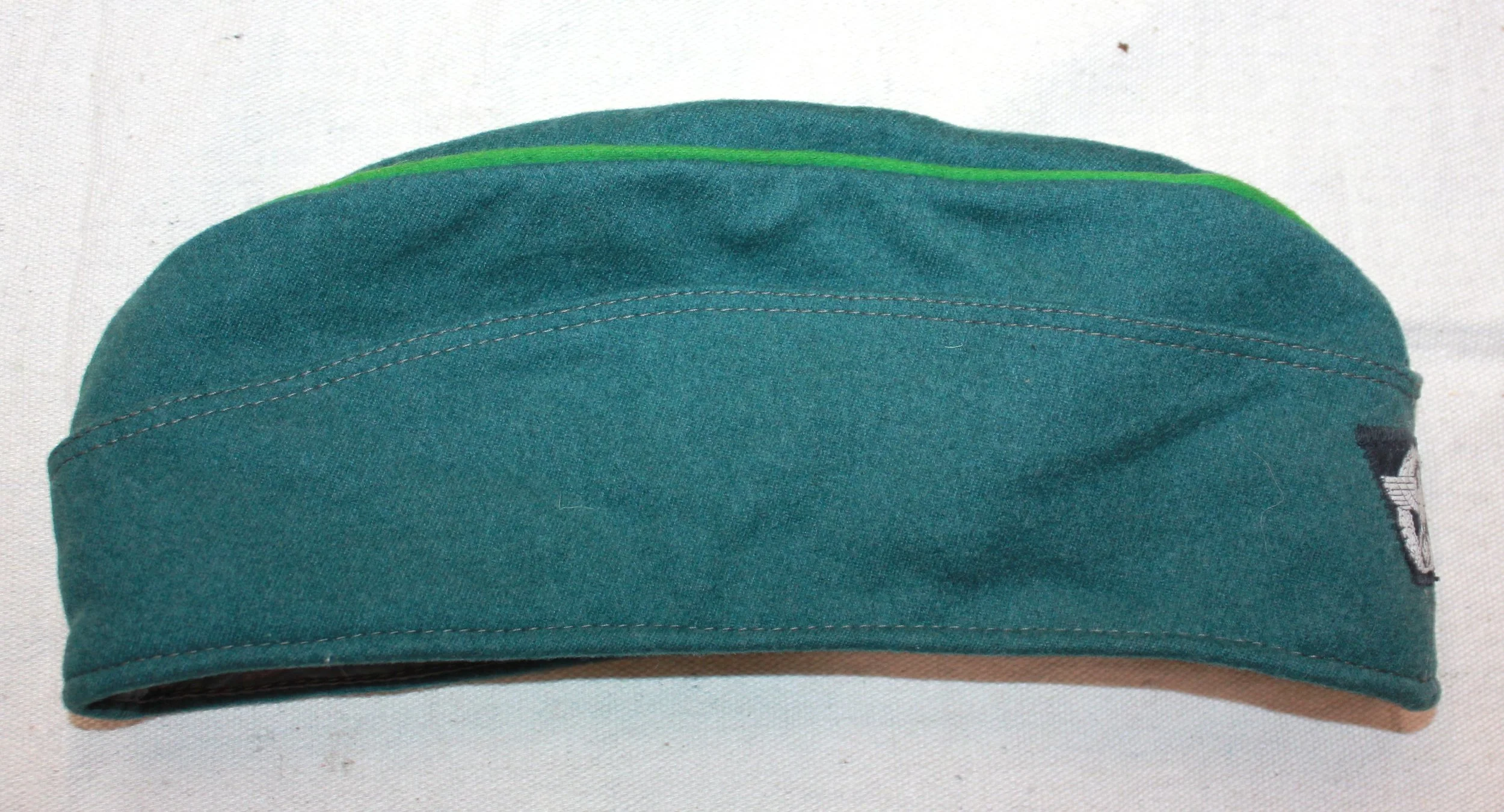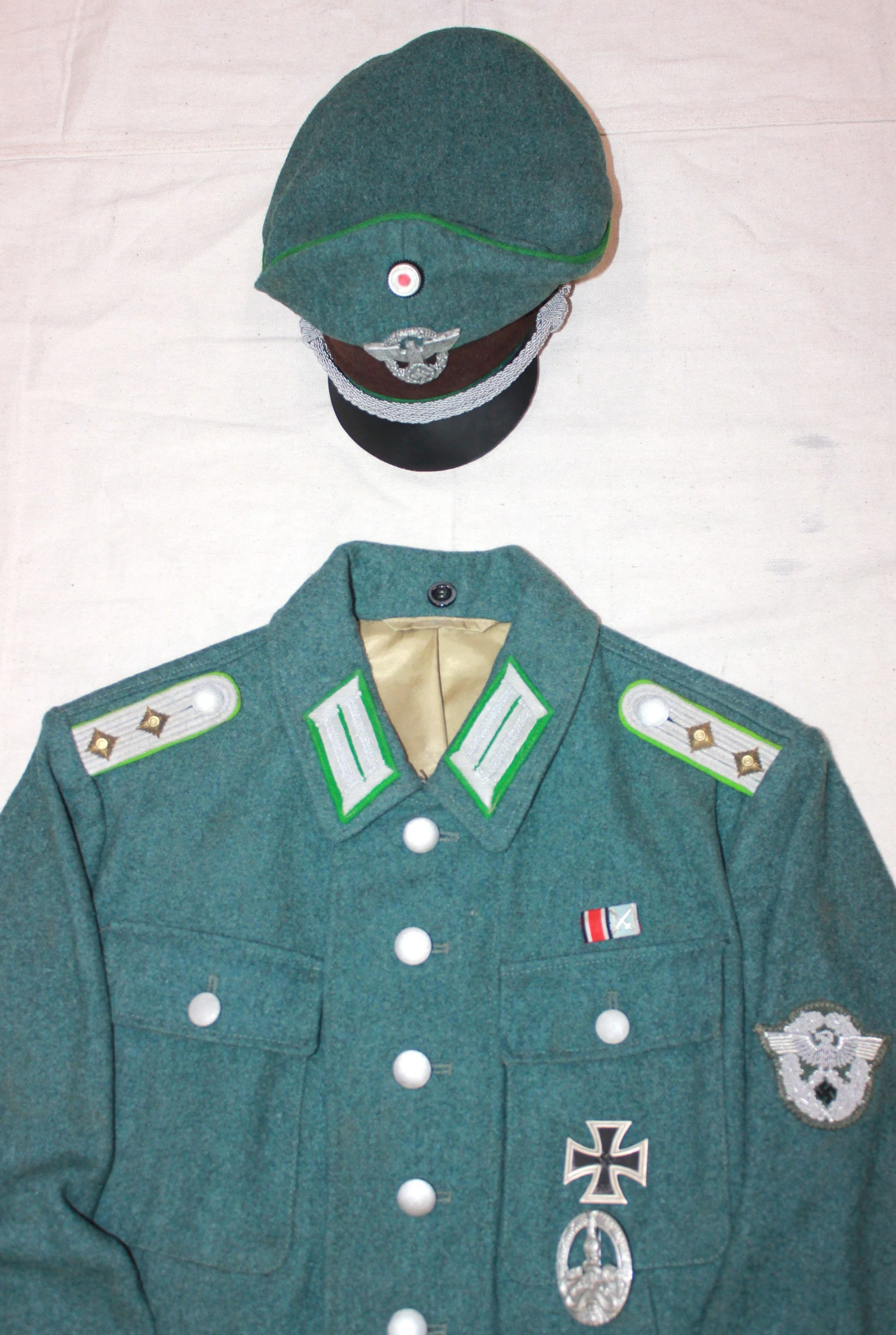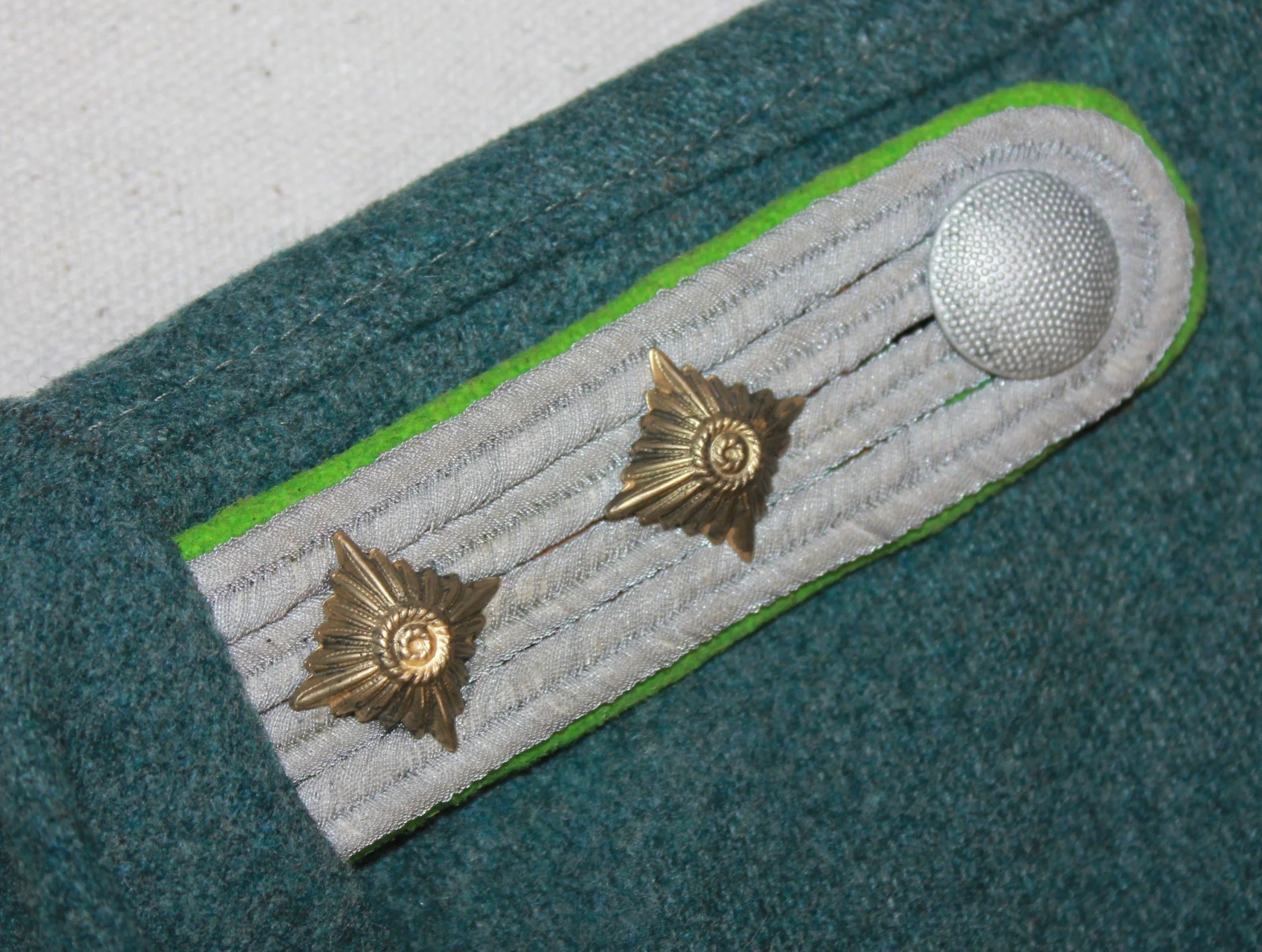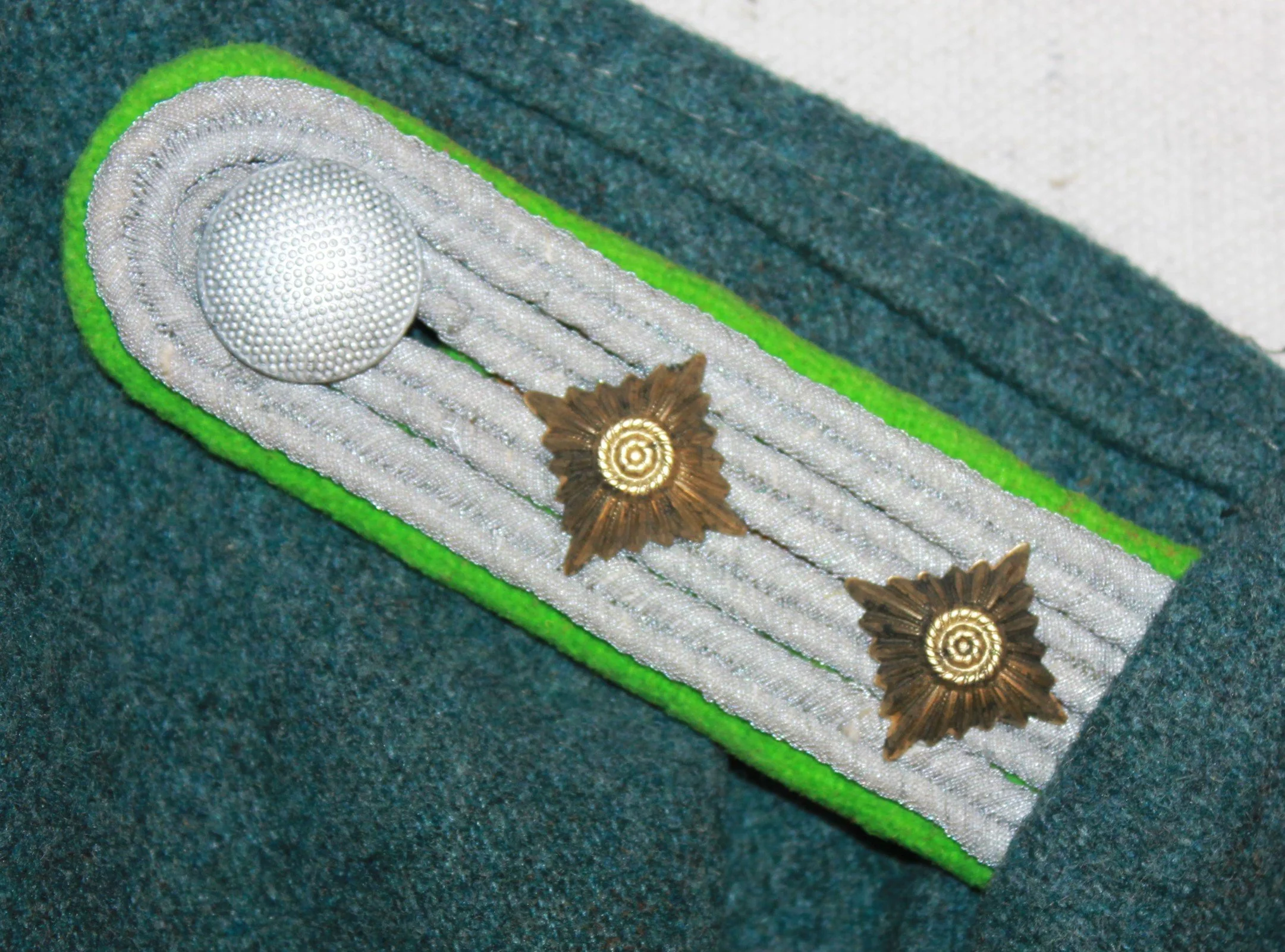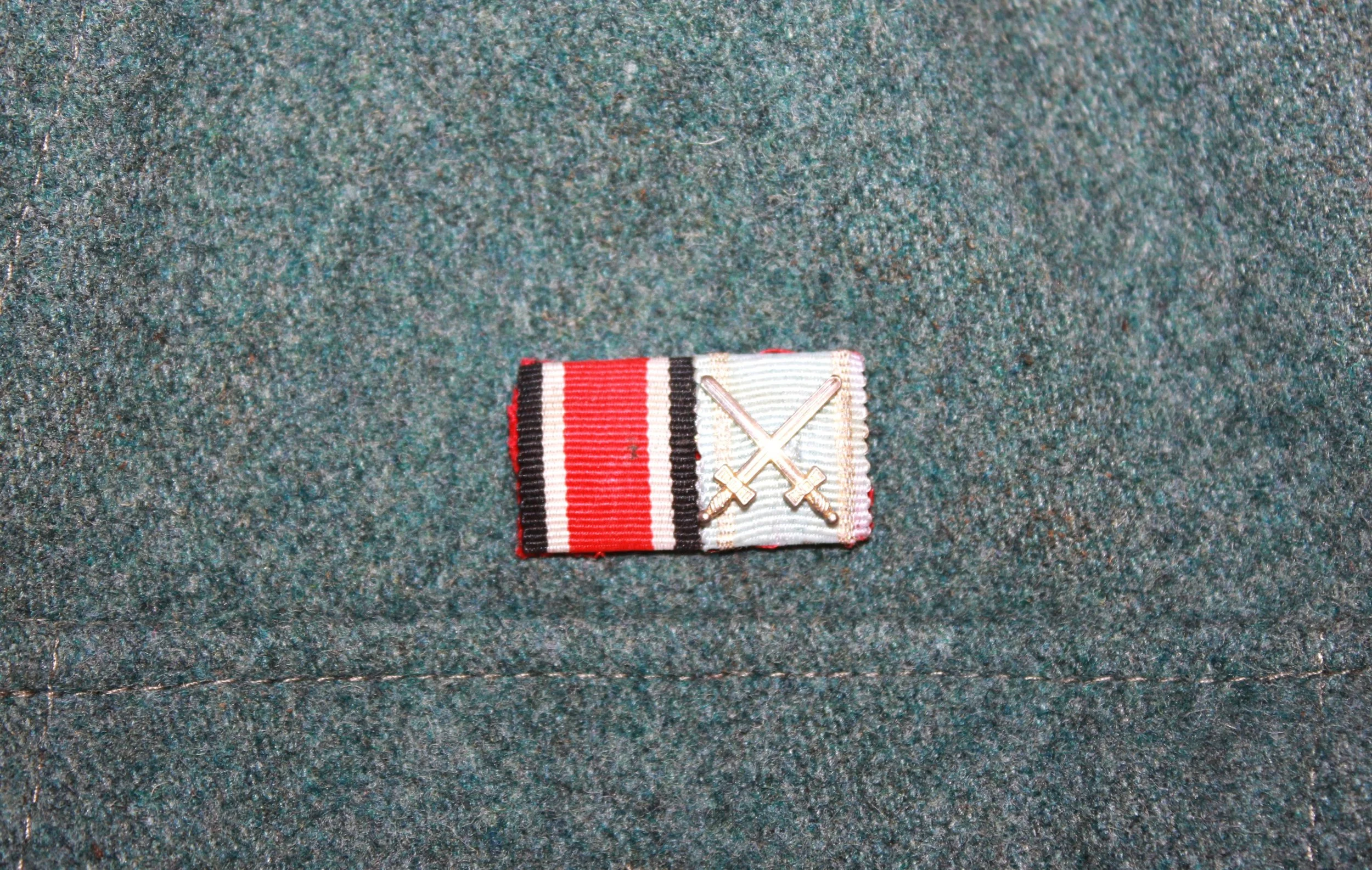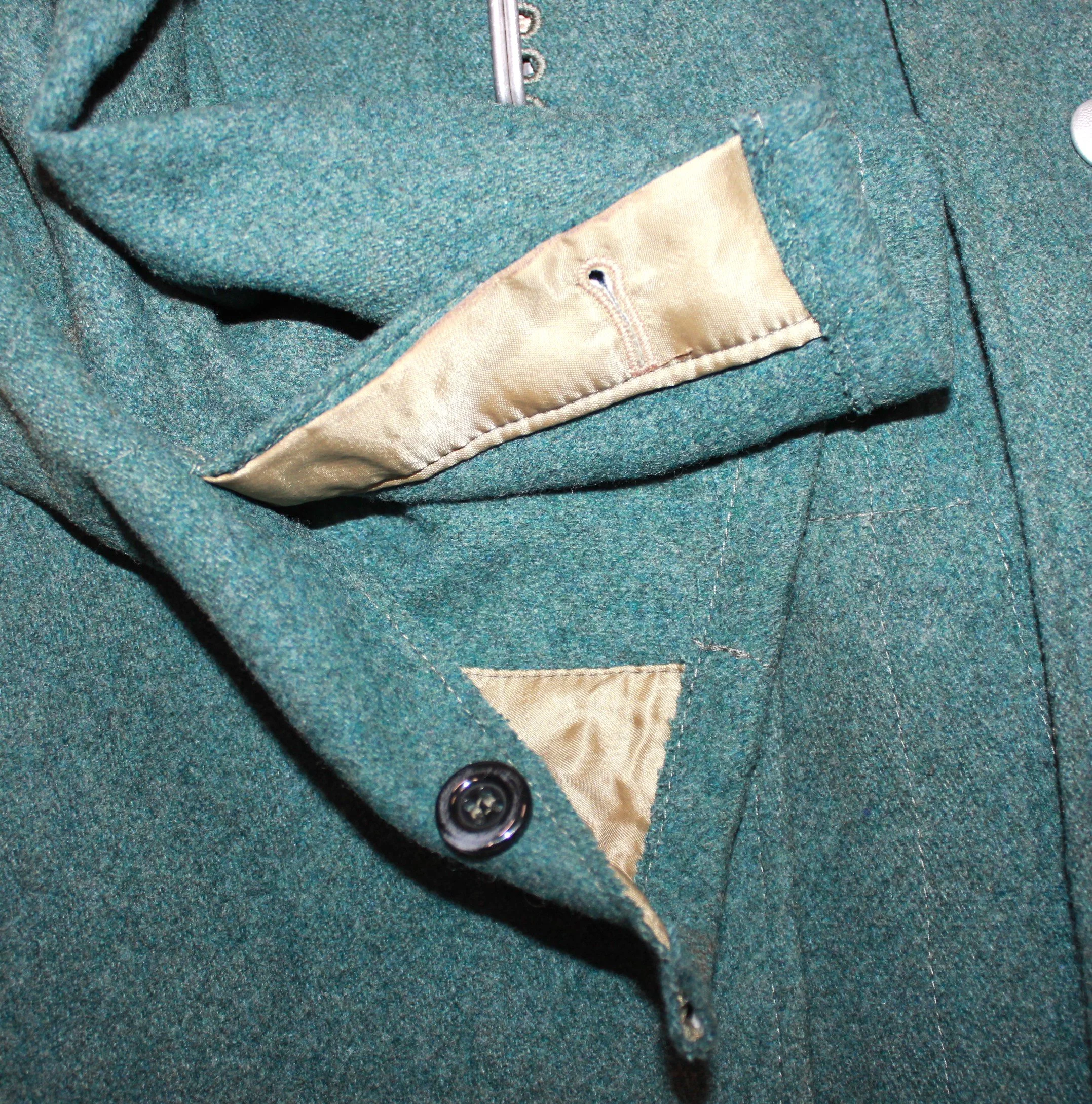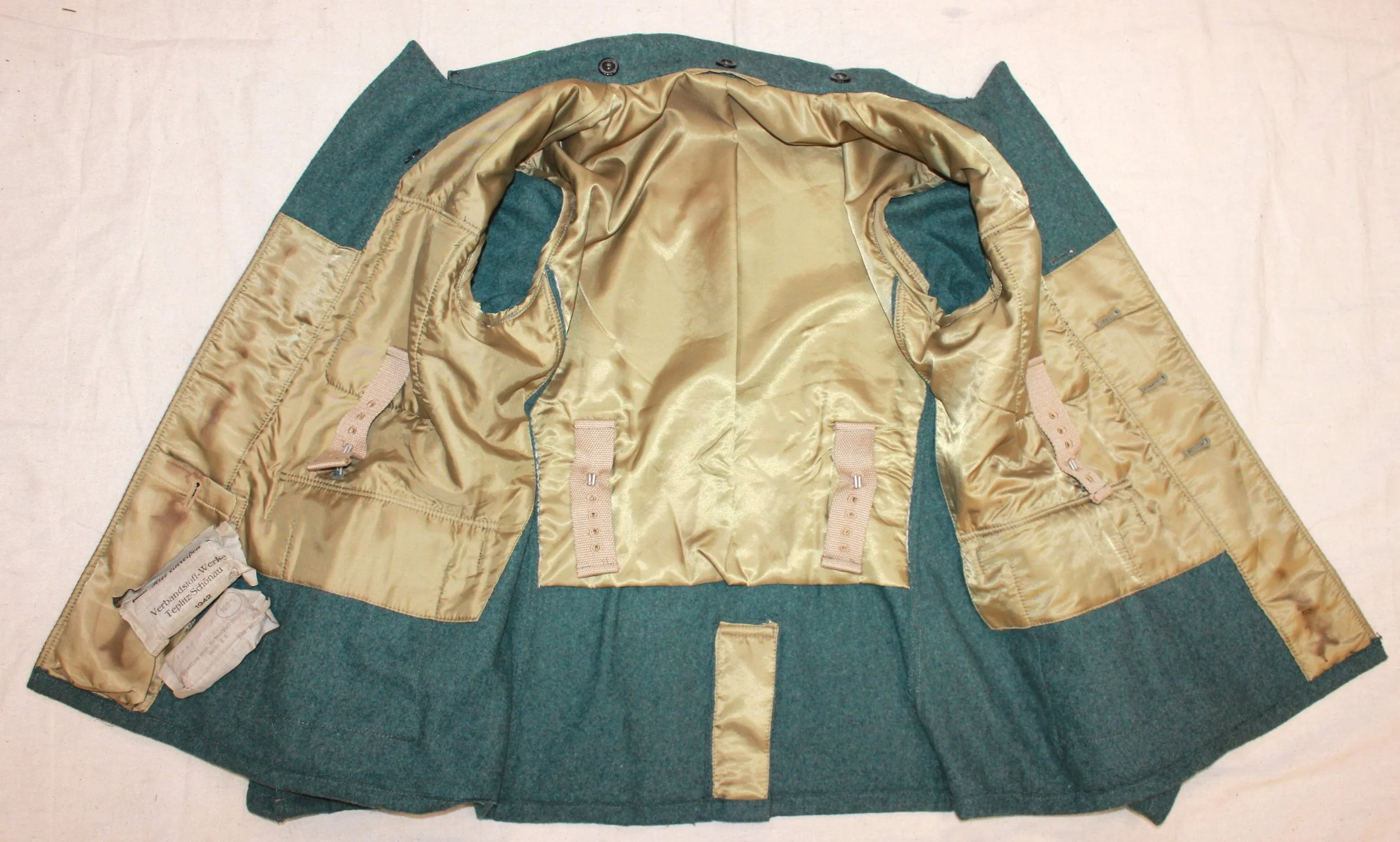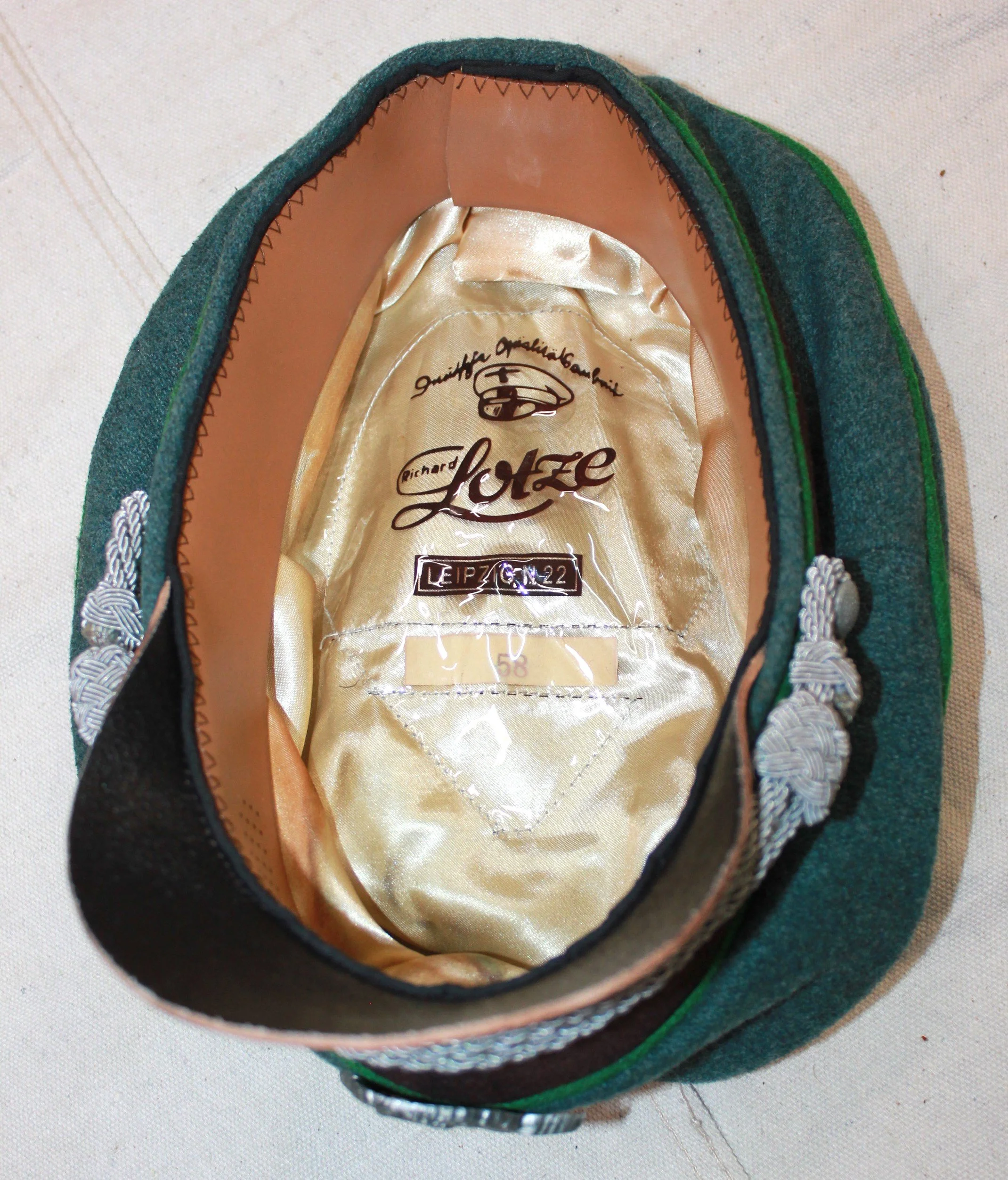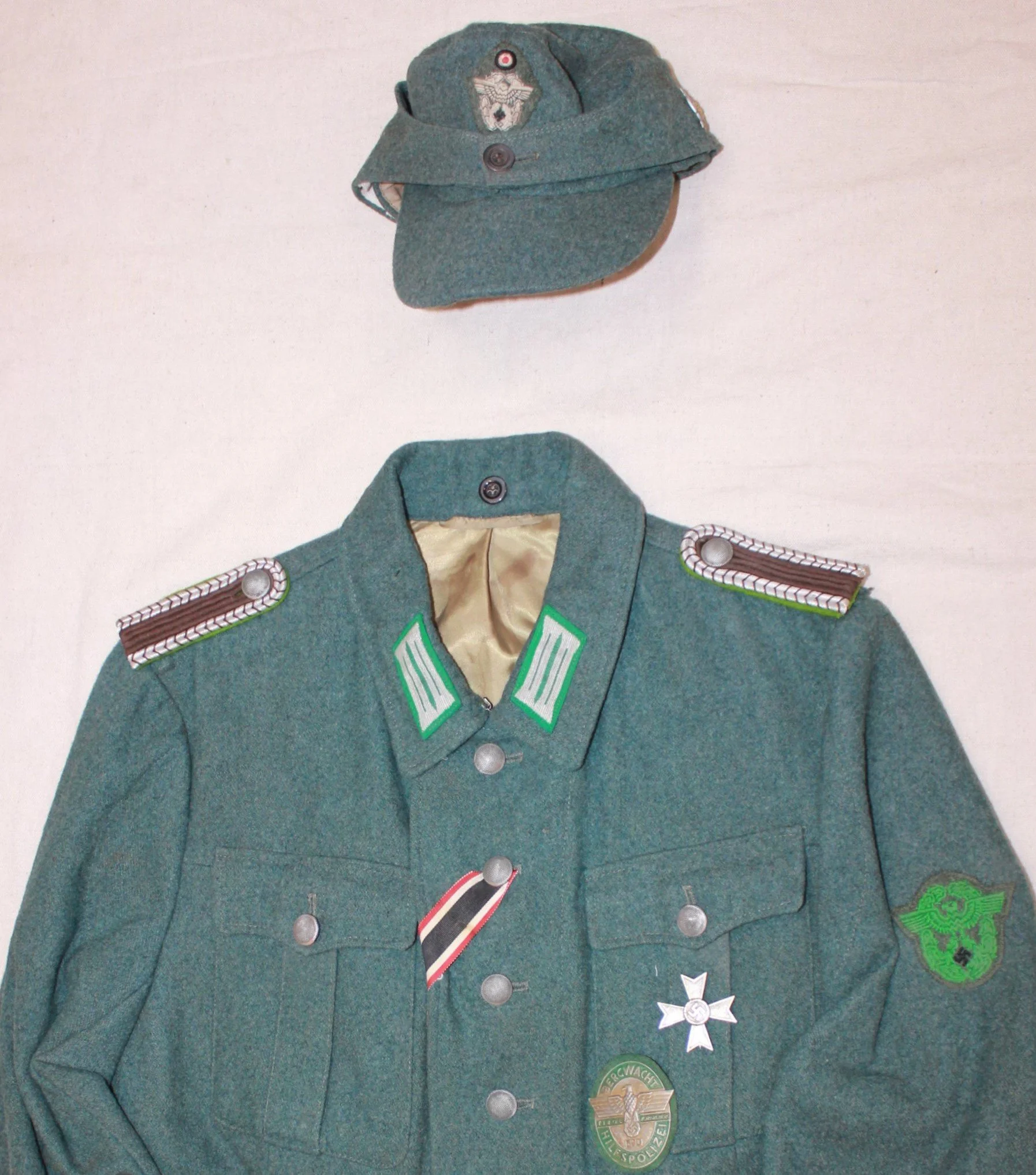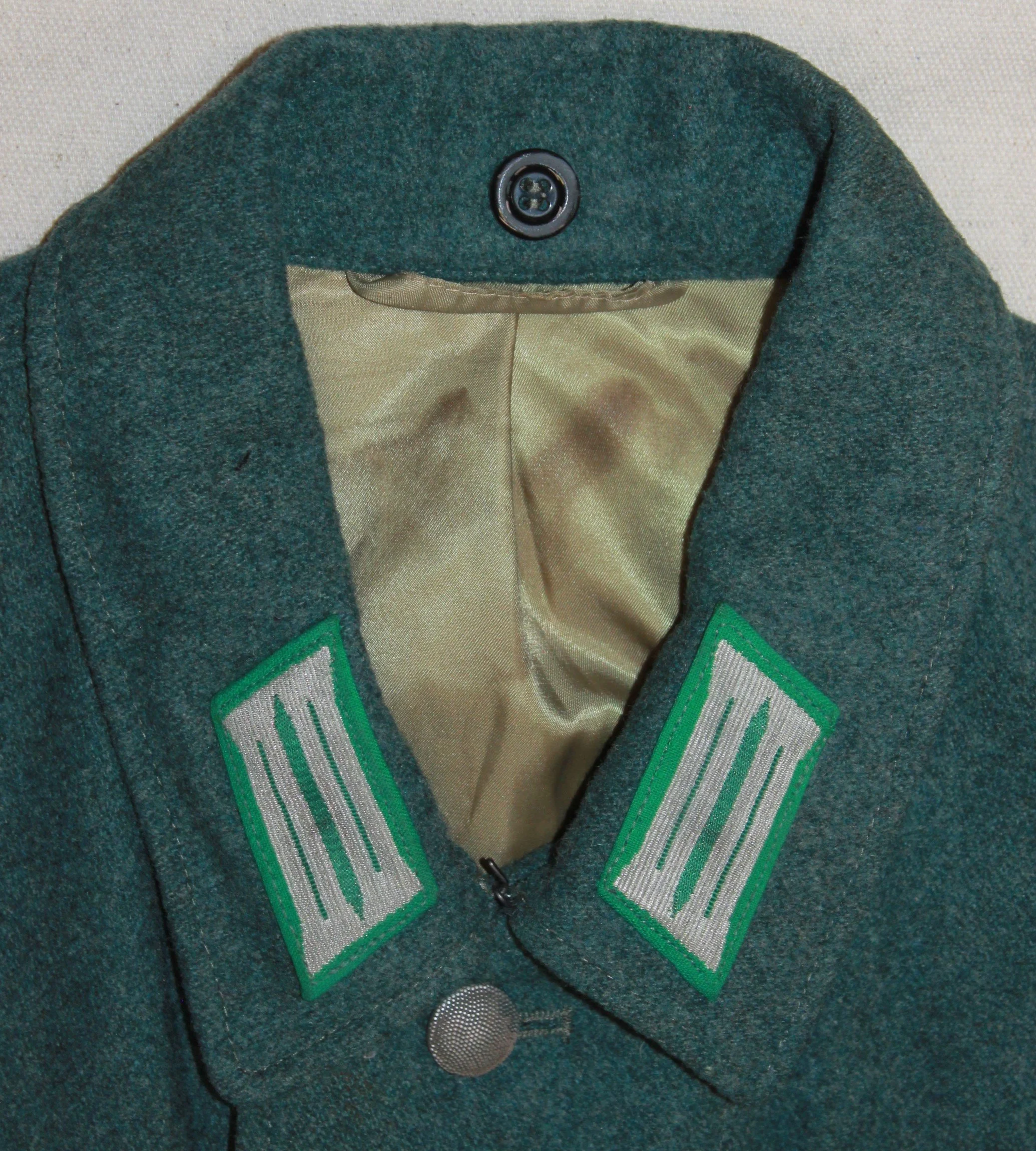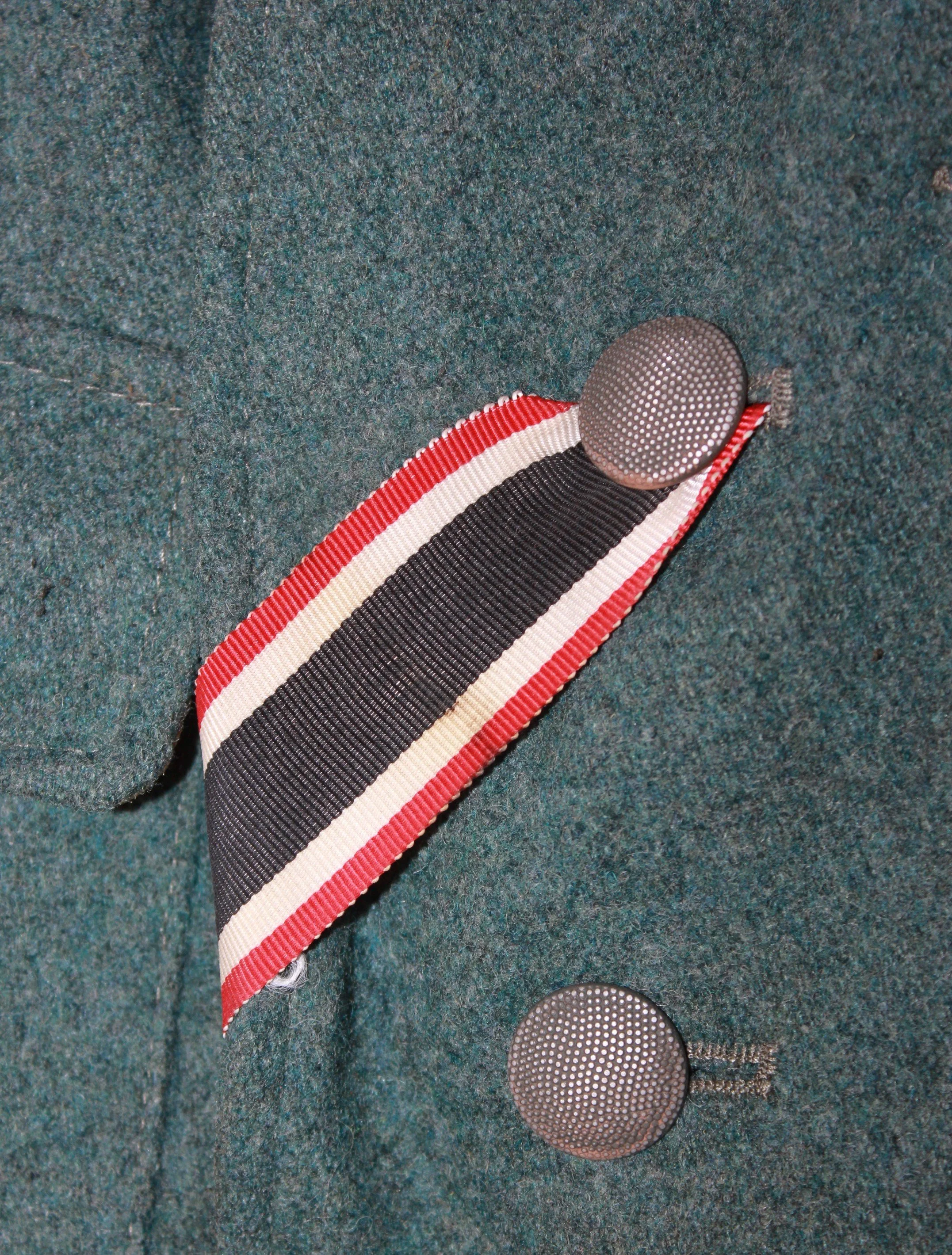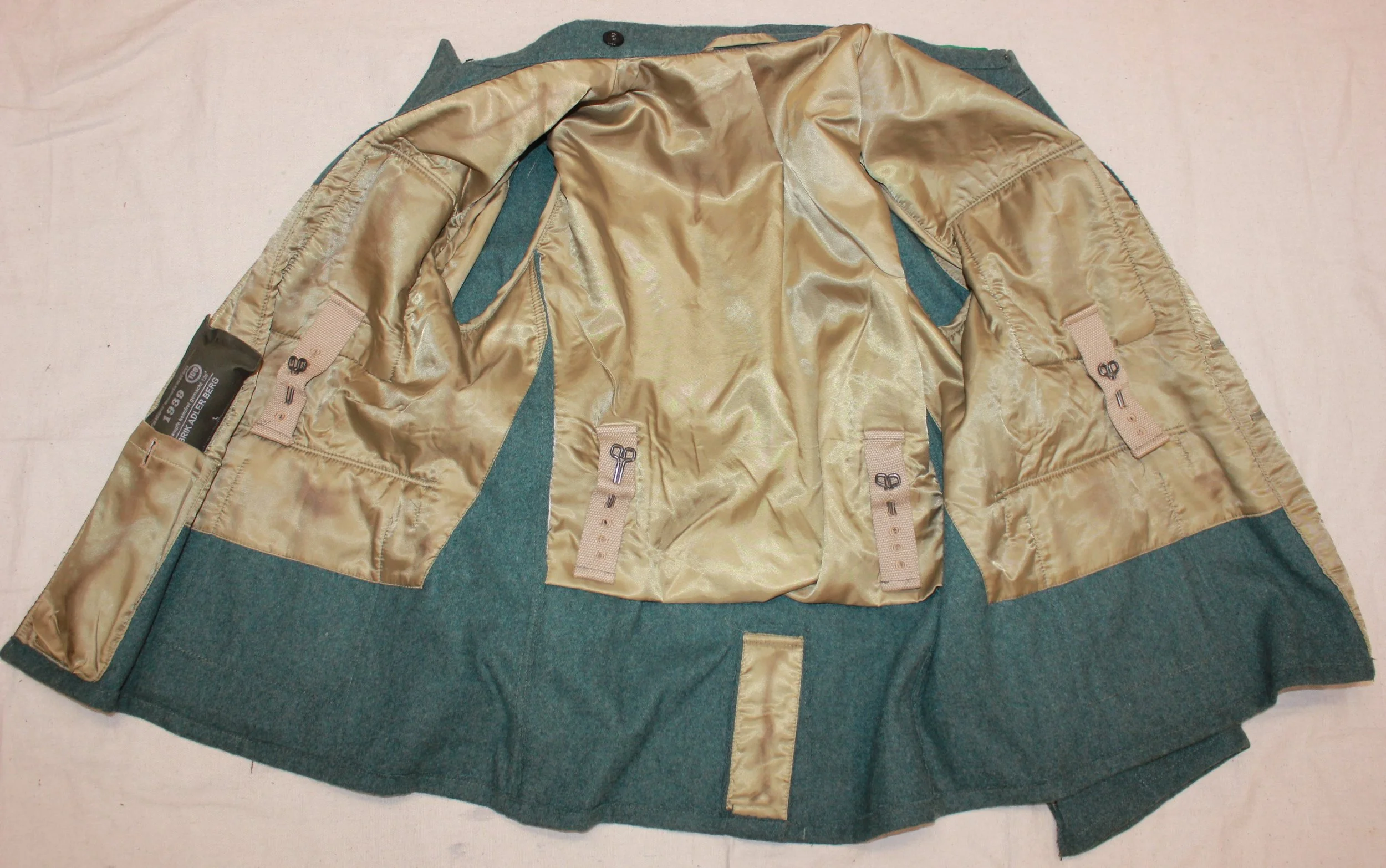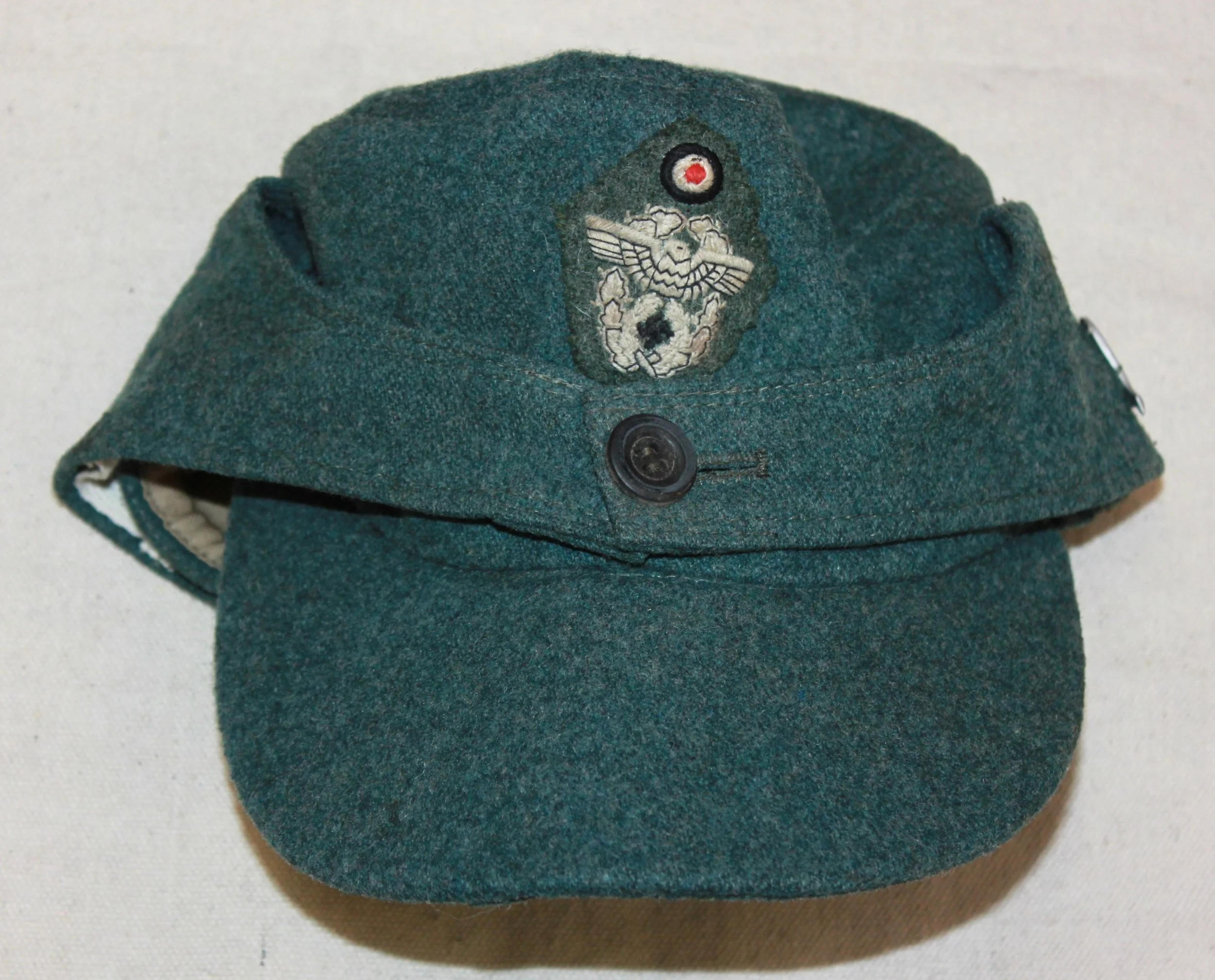Rural, Municipal & City Polizei:
Oberwahtmeister, Gemeindepolizei, Verwaultung Hanau:
Der Gemeindepolizei (GemPo) was the municipal law enforcement agency that served municipalities with more than 2,000 residents. These cities did not have a state police presence, such as the Gendarmerie or Schutzpolizei.
The GemPo and its operations were under the control of the elected Burgermeister or mayor, and the police commissioner, overseeing the day-to-day operations led by a professional chief of police. Cities with over 10,000 residents having a municipal police department were also obliged to have a municipal criminal investigation division or Kriminalpolizei (KriPo).
The Gemeinde Polizei should not be confused with the Gendarmerie, which was the law enforcement for towns with fewer than 2,000 residents. Hanau is a medium-sized city in the central German state of Hessen, situated just east of Frankfurt am Main. As the Allied bombing increased, Hanau, a major rail hub, was bombed relentlessly; at night, it often had areas lit up to draw away raids on Frankfurt’s large population. The city was destroyed, and the GemPo were on constant duty to secure and maintain order.
Note: This part of the collection, the Polizei Section, has been one of the more extreme of the collection to get together; there have been challenges, and most prized. I want to say I’m proud of these, not for what they represented in the end, but of the uniform and how they all came together as a collection. A ton of time and energy has gone into correcting them and having them as correct as we could get them; some may be a bit off, but they existed, and represent a particular part of these operations and their part in the history of the war. If there are still mistakes, I don’t doubt that there are; keep in mind it took a very long time to get the uniforms to this state, therein, and there was a load of research, generally through photographs and the like.
They are reproductions, but one-offs, 1 of a kind, to me anyway. They are made to the best of our ability, to get them historically correct, and I believe they are. I’ll leave it at that. Most are getting pretty old now. The German Military and Polizei uniforms went threw a million changes during WWII, and so the Polizei, from the people you went to for help, to the people you feared and hid from, in a very dark time. We used several books that were out at the time, etc. And we used the internet, of course, there is a lot more out there now, but we tried to get them right, and some may have used real insignia and or decorations.
“Updated~Again” Hauptwachtmeister, “Schutzpolizei der Gemeinden”:
The Schutzpolizei d. Gemeinden or Municipal Protection Police was a small branch of the overall German Police, hired by small towns not assigned Schutzpolizei protection. The Schutzpolizei der Gemeinden was charged with policing municipal areas of less than 5,000 population while Schutzpolizei der Gendarmerie controlled the outlying areas, while larger towns and cities fell to the Schutzpolizei der Reich. Schpo der Gemeinden was commanded by officers of Oberleutnant or Hauptmann.
On June 17, 1936, Reichsführer-SS Heinrich Himmler was appointed to the newly created position of Chef der Deutschen Polizei I’m Reichsministerium des Innern (Chief of the German Police in the National Ministry of the Interior), effectively giving him full control of all police agencies within Germany. As a result of this appointment and restructuring of all the separate German state police into a single national police force, new regulations were instituted on June 25, 1936, to bring about uniformity in dress to all Police throughout the country.
One of the new uniform regulations replaced the previously worn blue uniforms, with the new style of police green uniform utilized, with minor modifications, until the end of the war. The Police were divided into eight assorted branches of service, and during the restructuring, the different police agencies were assigned specific identifying “Truppenfarbe” (Color), with wine red truppenfarbe being allocated to the Schutzpolizei des Gemeinden.
These were small-city Police and were eventually merged into Schutzpolizei, so their uniforms are very hard to find. This Hauptwachtmeister is a decorated 1914-1918 war veteran who served in the Freikorps defending the Baltic region, being awarded the rare Baltische Kreuz. He has also been assigned to a small community with a duty connection to building the West Wall defenses and wears the ribbon as well as the long service ribbon. With this uniform, he will wear a Polizei black leather belt with cross-strap, holster, and dagger.
This Uniform did not have the “Shako” with it, but I had a couple of these and thought it fit, and this would make a nice home for it for now. Now then, I have to tell you, it has been a real challenge organizing these Polizei uniforms in the collection. It has taken an incredible amount of time and research to try and get tease together again and in the correct form, there may be mistakes, but I’ve redone many of these uniforms with correct caps and insignias that had fallen off or lost, etc. but I think it’s right now. I had Schutzpolizei mixed up with “Firemen” for instance, and several other uniform details have been corrected now
Meister der Gendarmerie Polizei Schule (Gendarmerie) Hildesheim 162.
Gendarmerie Bataillon Der Gendarmerieschule was located at Adolf Hitler-Straße 37, Hildesheim. Opening in 1936, the school consisted of 4 Kompanie, led by Major der Gendarmerie Nürrenbach.
In 1943, the class size was reduced by half to 2 Kompanie of strength of 250 men each. Following the end of the war, the main branches of the Polizei continued to maintain order. The command of the Polizei reverted to the German states as it had been before 1936. Police officers continue to train at this school to the present time. Der Meister wears the war period Polizei Diesntbluse, which lacks the piping as well as the brown collar and cuffs.
A veteran of the 1914-18 War, he is qualified and maintains the Deutscher Reichsbund fur Leibesubungen or National Sports Badge in Bronze. The badge was instituted in 1933 by the Deutscher Reichsbund fur Leibesubungen, or German National Physical Training Union, or DRL. It was widely awarded to civilians and the military who demonstrated proficiency at athletic events. Tests had to be passed annually in order for the badge to be retained. The badge was awarded in bronze, silver, and gold classes
“Updated” *Major, Ordnungspolizei (Rural Polizei):
During the time of the Weimar Republic, all the individual states (or Colonies) were in control of their police within their areas. But then, when Adolf Hitler became the Chancellor of Germany, on January 30, 1933, Hitler and the people cooperating with him had another way to use the Polizei, and they would cooperate with the Nazi Party, no two ways about it.
The likes of Hermann Wilhelm Göring, Wilhelm Frick, and the infamous Heinrich Himmler, all wanting power and control of the police forces, started to centralize the control of all the German police forces. Göring had his police forces early on, but Himmler had taken control of the “SS” in 1929, and by 1933 started to work his power with Hitler to consolidate his complete control of all the political police. For all of his good work, Hitler honored him, giving him the title of Reichsführer-SS as well as the Chief of the German Police as of June 1936.
Himmler had completely taken control of the All-Powerful “SS”, and also the Sicherheitspolizei or “Security Police”, including the criminal police, the Gestapo, and even the Ordnungspolizei. This included all the other organizations of Ordnungspolizei, like the Schutzpolizei (Protection Police), and the Gemeindepolizei (Local Rural Police).
They had become a very important part of the most feared and hated regimes in world history, the NSDAP, and the SS in just a few short years, most, of Europe came to hate any part of the SS bitterly, and legitimately, because rather they wanted to or not, becoming part of the SS, was to adopt the mission of the clearing out of all the Jews in the occupied areas, they also had helped to commit mass murder in a scale unheard of before.
They had been completely taken over by the government, and the Ordnungspolizei was often working with the criminal police and the Gestapo to monitor the local people, taking control of social and the controlling of political views. They enforced all the Nazi racial policies. The Ordnungspolizei formations also participated in Annexing Austria and taking control of the Sudetenland, and by 1939, some 100,00 were in their ranks.
When the Germans invaded Poland, Himmler made up formations of police battalions, strictly for security operations in the clean-up of the occupied territories. 21 police battalions (with 500 men each) participated in occupied Poland. Working with “Foreign Volunteers"- to help with the cleansing process of the occupied areas where the Einsatzgruppen were deployed to round up and exterminate anyone they felt undesirable, and would be used further in the rest of the territory the Nazis would claim as their land for growing space. By the time they invaded Russia, 100 police battalions participated.
This uniform depicts a Major of the Ordnungspolizei, as a high-pay-grade officer, he wears a Dressier-City uniform much of the time, These jackets were soon made of the rougher field service wool material as the NAZIs and then the SS took over more and more control, their mission began to change, with the brown cuffs and collar getting ditched in the process, their orders moved them outside the city limits, and across the occupied territories. He served in the First World War as well and has many decorations from that war, like the Iron Crosses I and II class, and the Silver Wound Badge. He was still fit enough to earn the SA sports badge before his current service.
The uniform would be finished with matching trousers or breeches and brown boots, he likely wore a sidearm on a brown belt with 2 claws on the buckle. His cap should be piped in silver, not orange (my mistake, another quick photo shoot). The Shako cap doesn’t do the uniform a lot of justice either. I took a chance, it’s pretty cheesy, and the insides were replaced once, and a lot of that has peeled out, but I haven’t found the correct cap yet. The uniform depicts his service before the SS took over control, and then he would have had to sew on the SS runes below his left pocket.
*Note: Over the years, the collection uniforms have had several photo shoots for various sections more or less times, and with moving several times and in and out of storage units, the caps and details have changed around sometimes. The M43 type cap (for an officer) should have had silver braid piping, and the orange piped for a lesser grade, not to say this never happened, I will go threw them all before I sell them, and every uniform will have a hat or two in the collection. This particular Shako Kapi has completely tried to self-destruct itself, I may try to fix it up-not sure it’s worth the effort.
*The M43 shown here is not an officer’s cap, but it’s all I have, and needed a home for now, an officer’s cap would have silver braid around the top.
“Updated” Hochgebirgs Gendarmerie (Mountain Polizei):
In those areas of the Reich, including the annexed territories, that were mountainous or were prone to heavy snowfall during the winter months, specially trained members of the Gendarmerie, skilled in skiing and mountaineering, were employed.
Members of the Mountain Gendarmerie (Hochgebirgs Gendarmerie) had to undergo four years of practical experience in Mountaineering and Rock Climbing before qualifying as a specialist with the right to be known as an expert and entitled to wear the badge of an expert mountaineer.
Skiers in the Mountain Gendarmerie were required to possess similar advanced training. Training took place at one of several schools: Oberloch bei Hindelang, Sudeifeld a Wendelstein, and Kitzbuhel in the Tirol.
The personnel of the Hochgebirgs Gendarmerie wore the same basic green uniform as worn by the Schutzpolizei, but were distinguished as Gendarmerie personnel by having light brown cuffs and collars to their tunics and greatcoats piped in orange piping. They wore long trousers tucked into boots and also the ‘Mountain Ski Cap’ with Polizei insignia on the front, in either the cloth or metal versions.
This Gendarmerie is a veteran of the Imperial Navy of the 1914-18 war. Wounded during this service, he wears the Imperial Naval Wound Badge in Black. During the conflict, he showed his combat leadership and was awarded the Iron Cross II Class. This leadership continues as we see he has been awarded the War Merit Cross II Class as well, during this conflict. His skill as a sailor is matched or exceeded by this ability as an Alpinist, having been awarded the Police Alpine Badge.
*I have taken the liberty here to show the Black Visored version of the Shako Helmet, I’ve had it a long time and it never found a particular uniform to have a home with, I think it works here, but no confirmation it is correct, but I am showing it at any rate.
Revier-Oberwachtmeister, Polizei–Verwaultung, Waffenschule I, Dresden:
The Schutzpolizei des Reiches, or the Schupo, was the state protection police and a branch of the Ordnungspolizei. Schutzpolizei is the uniformed police force in cities and large towns. An armed branch, weapons training was mandatory for all Polizei.
Weapons maintenance was required for all firearms, and for this purpose, graded levels of armorers trained and graduated from Waffenschule around the Reich. A decorated military veteran, the Revier Oberwachtmeister is a senior NCO at Waffenschule I. An administrative official whose exact function is lost to time, but we can be sure he kept order in his section. The Polizei was an armed service with a variety of weapons, including machine guns.
Meister der Schutzpolizei, II. Bataillon Polizei Regiment 7:
Polizei-Regiment 7 was formed in July 1942 in Wehrkreis VI from Polizei Bataillon 309, 317, and 123, which were redesignated as the Regiments I, II, u. III Bataillon. The regiment was transferred to Norway shortly after formation. In Juli 1943, the regimental Kommand u. I Bataillon was stationed in Trondheim, II Bataillon in Spillum, and III Bataillon in Narvik. On 24 February 1943, all police regiments were redesignated as SS-Polizei Regiments. The regiment remained in Norway until the surrender.
The Meister der Schutzpolizei wears the standard Polizei Bluse with grün Waffenfarbe. As shown in period drawings and photos, he could wear various headgear to include the Shako, Stahlhelm, Diesntmütz, or Feldmütz.
Hauptmann der Schutzpolizie 313:
Polizei Schutzen Bataillon 313. Polizei–Bataillon was formed in Stettin in 1940 and sent to Lublin in the General Government, occupied Poland. In January 1940, the Battalion advanced to the Brest-Litowsk and Bobruisk area of the Soviet Union. As part of Heeregruppe Nord, they took part in the siege of Leningrad, subordinate to the 268th. Infanterie-Division. Refitted in the summer of 1942, the Bataillon was renamed the III. / Polizei-Regiment 14. Destroyed on the Ost Front in 1943, it was rebuilt in Southern France and then returned to Ost.
The Hauptman wears a Model 1943 style Bluse cut from Polizei fabric. He has had Schulterklappen sewn into the shoulder seam, with officer quality Litzen and sleeve eagle. His combat leadership has been recognized with the award of both Klasse of the Eiserne Kreuz. He has been in combat with partisan forces for at least 50 days, as shown by the award of his Bandenkampfabzeichen in Silber. His Feldmütz für Offizier or crusher cap has a chin cord added and is his standard fiel capd
Wachmeister, II. Bataillon Polizei-Gebirgsjäger-Regiment 18:
SS-Polizei-Gebirgsjäger-Regiment 18 was formed 23 Mai 1942 in Garmisch-Partenkirchen (Bavaria) from 302. Polizei-Gebirgsjäger Bataillon (Munich), 312. Polizei-Gebirgsjäger Bataillon (Innsbruck) and 325. Polizei Gebirgsjäger-Bataillon. It was the only Gebirjäger Regiment of the Polizei. In recognition of their mountain troop status, members of Polizei-Gebirgsjäger-Regiment-18 were authorized to wear an Edelweiss badge on their lower left sleeve. In February 1943, all Polizei Regimenter had the ‘SS’ prefixed and added to their titles. The regiment was initially sent to Slovenia to fight the partisans. In Dezember, it was sent to Finland and was stationed at Oulu in January 1943, where it was attached to XVIII. Gebirgs-Armeekorps. It fought in Finland until July, when it was sent to Danzig.
Transferred to Greece in August 1943, it took part in anti-partisan operations until the German withdrawal, fighting a withdrawal through Yugoslavia until surrender to the Soviets on the Austro-Yugoslav border. He wears the Dienstabzeichenbadge Bergwacht Hilfspolizei Tirol. This “Mountain Rescue Auxiliary Police Badge was worn while on duty, while in service in the Tyrol-Voralberg mountains. The Bergwacht Hilfspolizei began after the 1914-18 War, when the Tyrolean flora and fauna were badly affected by the boom in tourism and the many visitors.
The Tyrolean state government set up a mountain rescue service in October 1927. The tasks of the mountain guards, according to this law, were "the protection of people and the property of the field, alpine and forest property, as well as alpine shelters". The Bergwacht was placed under the Reich governor as part of the Polizei in 1941. The mountain rescue service was now deployed as an auxiliary police force in the Tyrol Vorarlberg district.
The scope of duties remained largely the same as before the connection. However, the Third Reich brought with it the establishment and expansion of nature reserves in Tyrol, the monitoring of which remained the task of the mountain rangers. In close cooperation with the German Alpine Association, rescue services were also carried out in the event of alpine accidents. As members of the Polizei, Bergwacht members could be transferred as needed, and many found themselves in the 312. Polizei Gebirgsjäger-Bataillon is headquartered in Innsbruck. Former members proudly wore their unit badge on their Dienstbluse.
